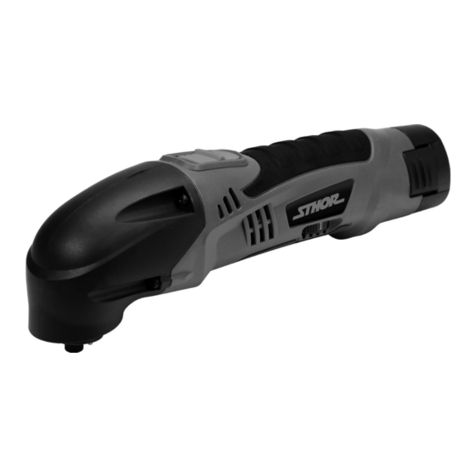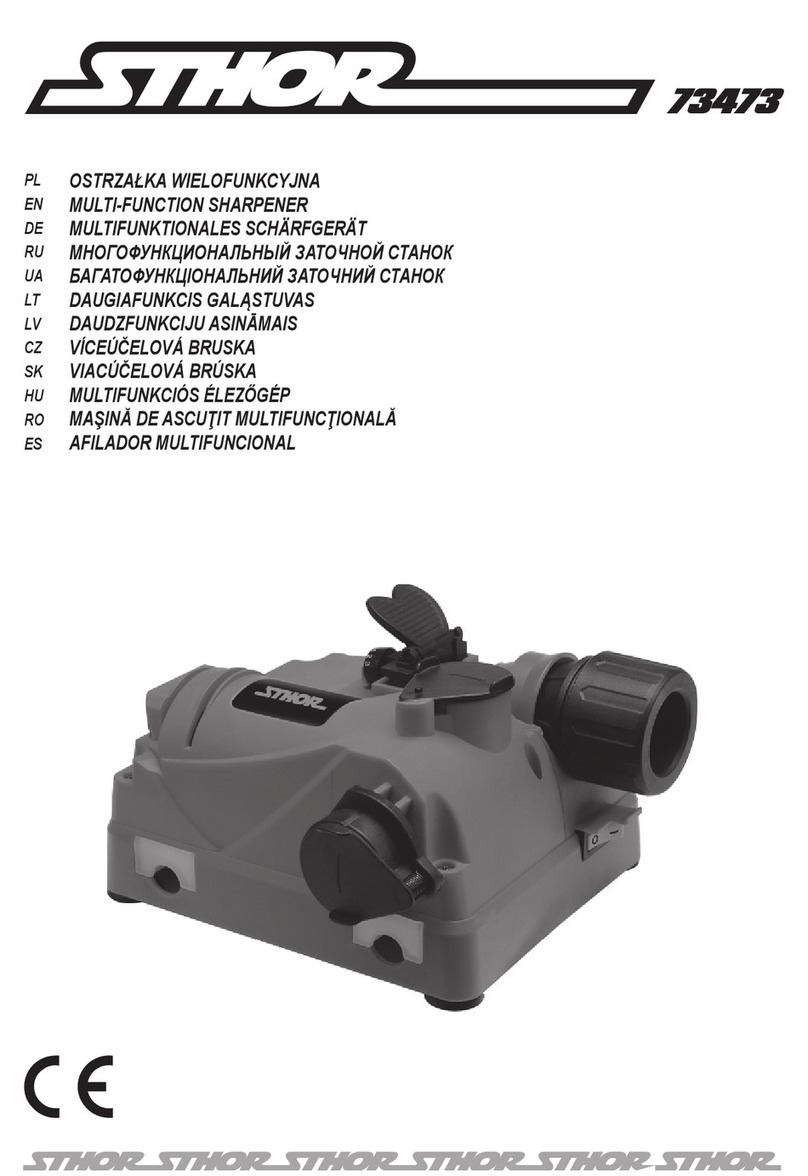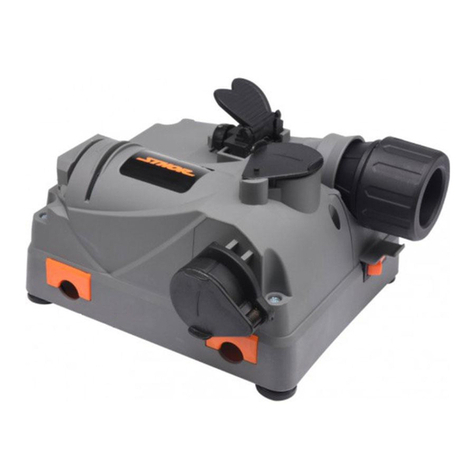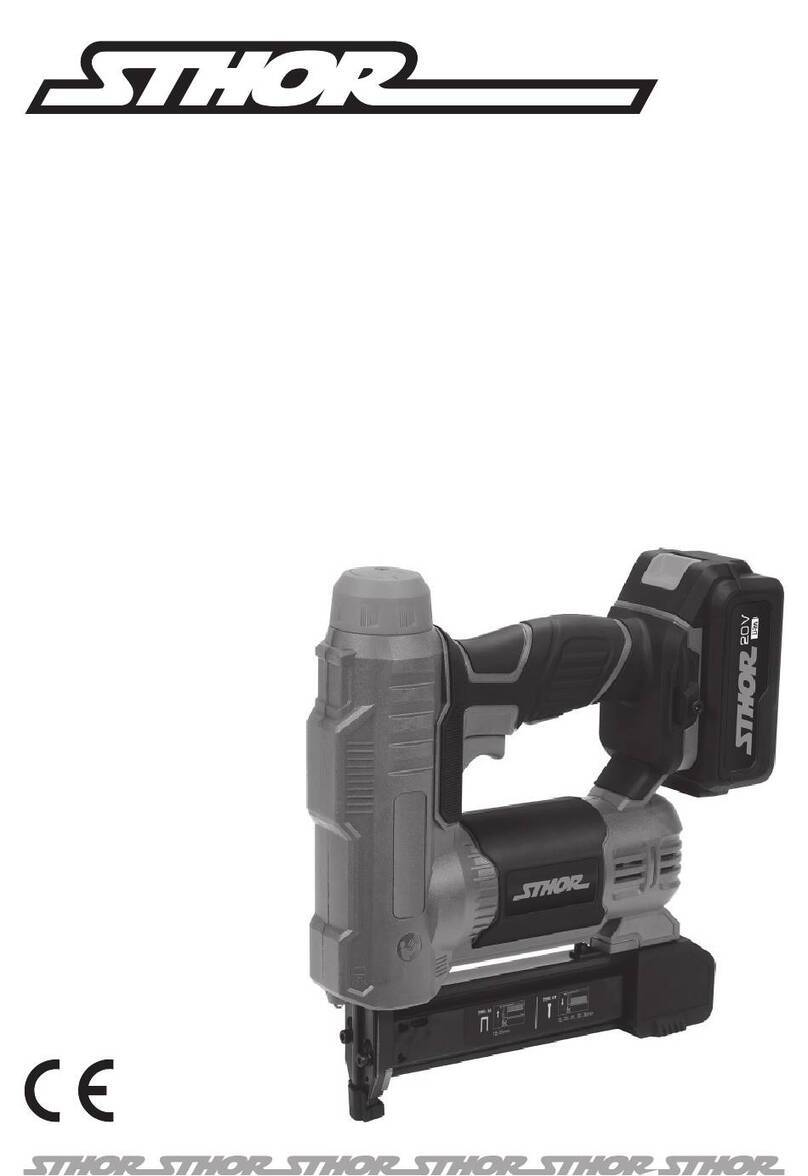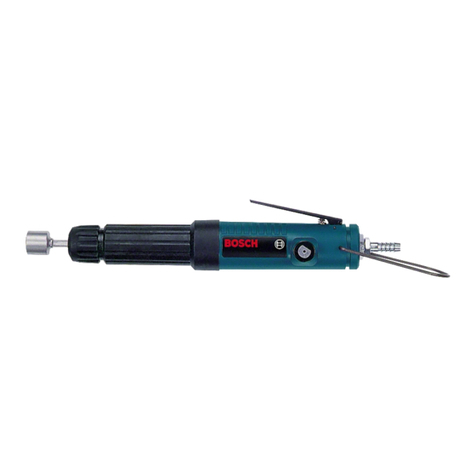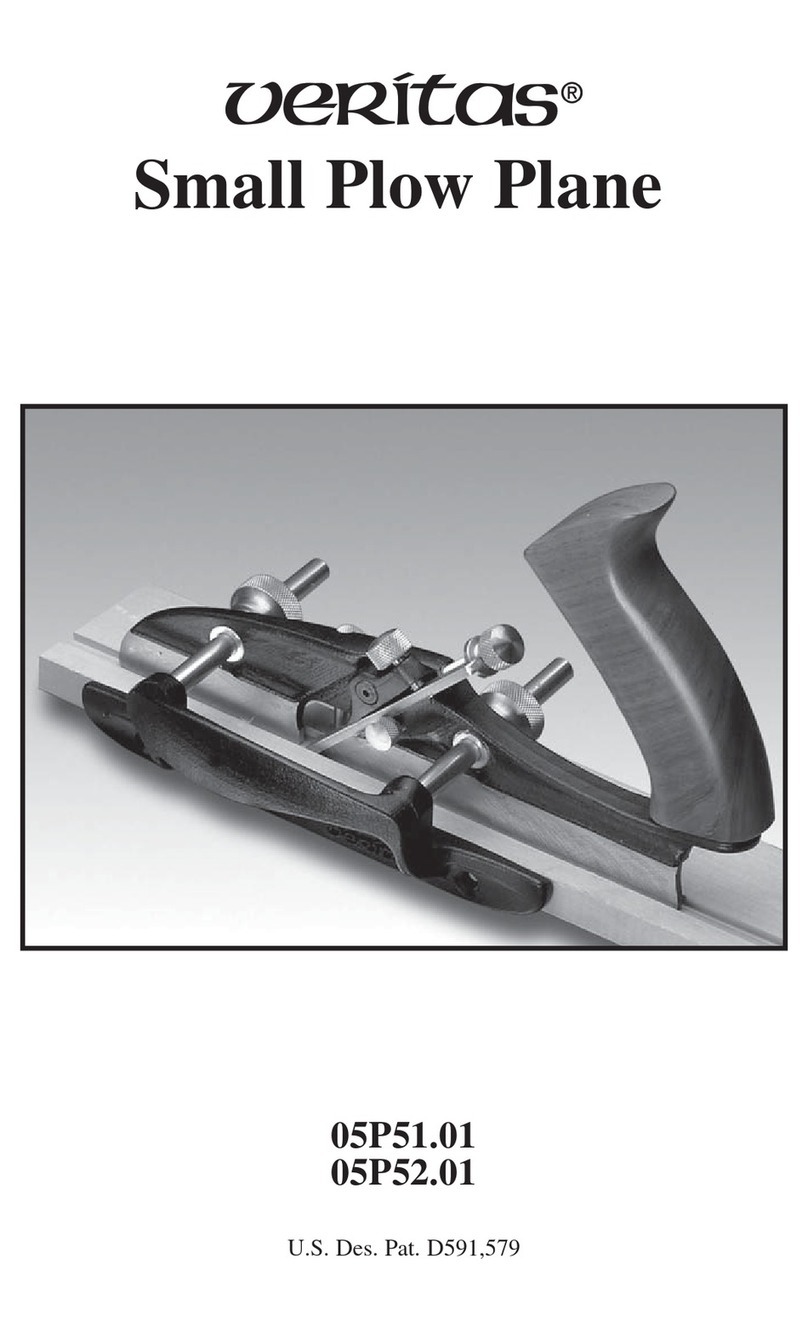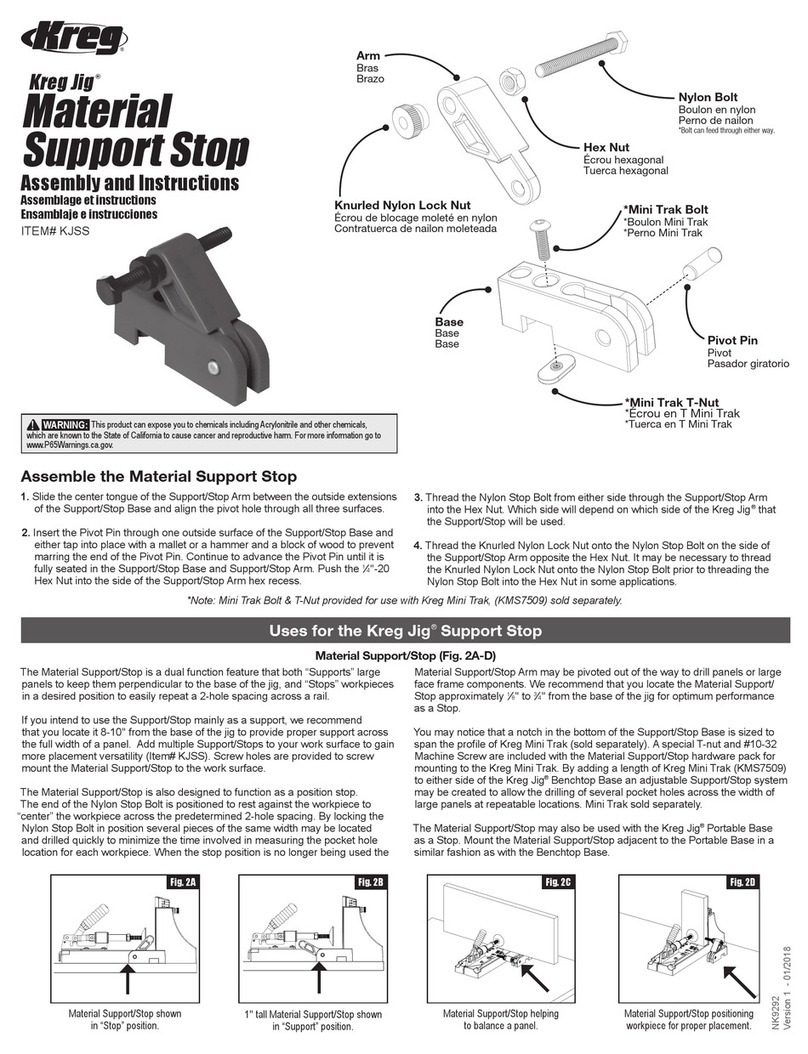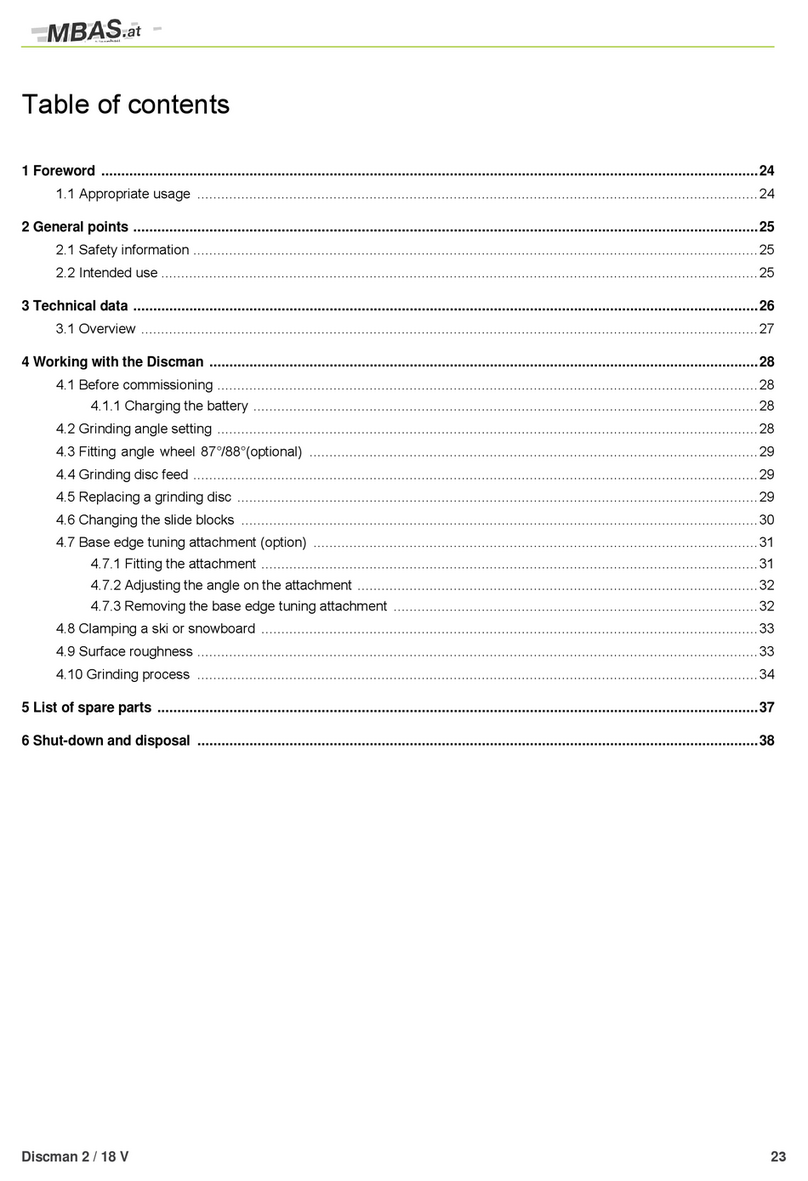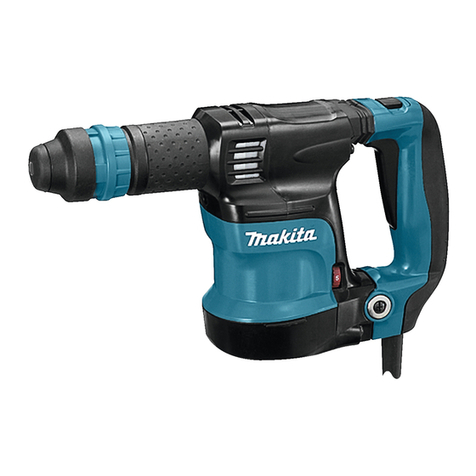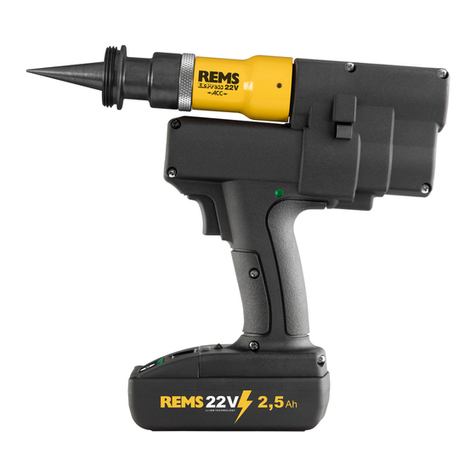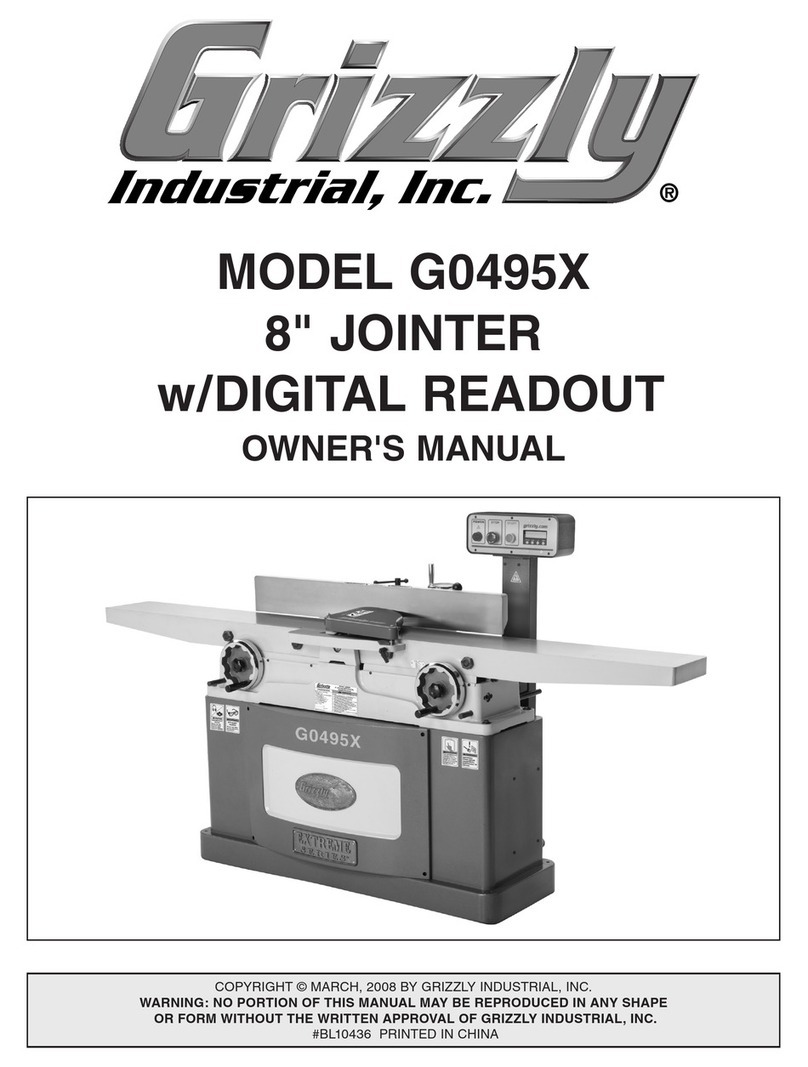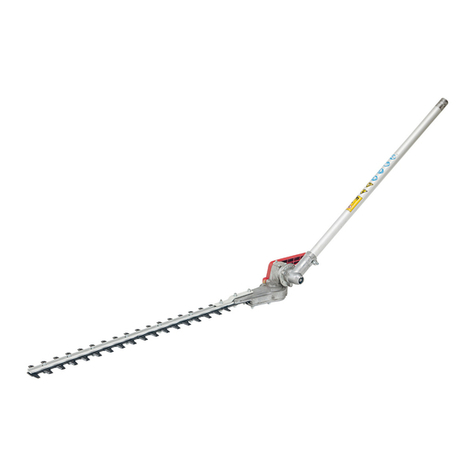Sthor 79474 User manual

79474
WYRZYNARKA ELEKTRYCZNA
ELECTRIC JIG SAW
ELEKTRISCHE STICHSÄGE
ЭЛЕКТРОЛОБЗИК
ЕЛЕКТРОЛОБЗИК
ELEKTRINIS SIAURAPJŪKLIS
ELEKTRISKAIS ROTZĀĢIS
ELEKTRICKÁ PILA OCASKA
ELEKTRICKÁ CHVOSTOVÁ PÍLA
ELEKTROMOS SZABLYAFŰRÉSZ
TRAFORAJ ELECTRIC
CORTADORA ELÉCTRICA
SCIE SAUTEUSE ELECTRIQUE
SEGA DA TRAFORO ELETTRICA
DECOUPEERZAAG
ΗΛΕΚΤΡΙΚΗ ΣΕΓΑ
PL
GB
D
RUS
UA
LT
LV
CZ
SK
H
RO
E
F
I
NL
GR

INSTRUKCJA ORYGINALNA
2
PL GB D RUS UA LT LV CZ SK H RO E F I NL GR
TOYA S.A. ul. Sołtysowicka 13-15, 51-168 Wrocław, Polska
Rok produkcji:
Production year:
Produktionsjahr:
Год выпуска:
Рік випуску:
Pagaminimo metai:
Ražošanas gads:
Rok výroby:
Rok výroby:
2017 Gyártási év:
Anul producţiei utilajului:
Año de fabricación:
Année de fabrication:
Anno di produzione:
Bouwjaar:
Έτος παραγωγής:
III
IV
III
V VI
5
1
2
3
4
6
7
8
9
10
11
12
13
14
15
16

INSTRUKCJA ORYGINALNA 3
PL GB D RUS UA LT LV CZ SK H RO E F I NL GR
CZ
PL GB
1. korpus
2. rękojeść
3. włącznik elektryczny
4. blokada włącznika
5. regulacja oscylacji brzeszczotu
6. osłona brzeszczotu
7. uchwyt brzeszczotu
8. regulacja kąta cięcia
9. rolka brzeszczotu
10. podstawa
11. brzeszczot
12. klucz
13. przewód elektryczny z wtyczką
14. pokrętło regulacji obrotów
15. prowadnica
16. przyłącze odciągu pyłu
1. body
2. handle
3. electric switch
4. switch lock
5. adjustment of the blade oscillation
6. blade cover
7. blade holder
8. adjustment of the cutting angle
9. blade roll
10. basis
11. blade
12. wrench
13. power cord with plug
14. revs control knob
15. guide
16. connection of the dust extraction
D
1. Gehäuse
2. Handgriff
3. Elektroschalter
4. Blockade des Schalters
5. Regelung der Schwingungen des Sägeblattes
6. Abdeckung des Sägeblattes
7. Halterung des Sägeblattes
8. Regelung des Schnittwinkels
9. Sägeblattrolle
10. Grundplatte
11. Sägeblatt
12. Schlüssel
13. Elektroleitung mit Stecker
14. Drehzahlregler
15. Führung
16. Anschluss der Staubabsaugung
SKLV
1. korpuss
2. rokturis
3. elektrisks ieslēdzējs
4. ieslēdzēja blokāde
5. zāģa plātnes ātruma regulēšana
6. zāģa plātnes apvalks
7. zāģa plātnes rokturis
8. griešanas leņķa regulēšana
9. zāģa plātnes rullītis
10. pamatne
11. zāģa plātne
12. atslēga
13. elektrības vads ar kontaktdakšu
14. griezes ātruma regulētājs
15. vadīkla
16. putekļu sūcēja īscaurule
1. skříňnářadí
2. rukojeť
3. elektrický vypínač
4. aretace vypínače
5. regulace předkmitu pilového listu
6. kryt pilového listu
7. upínací systém pilového listu
8. nastavení úhlu řezu
9. váleček pilového listu
10. patka
11. pilový list
12. klíč
13. elektrický kabel se zástrčkou
14. knoflík regulace otáček
15. vodící doraz
16. adaptér pro odsávání prachu
1. skriňa náradia
2. rukoväť
3. elektrický vypínač
4. aretácia vypínača
5. regulácia predkmitu pílového listu
6. kryt pílového listu
7. upínací systém pílového listu
8. nastavenie uhla rezu
9. valček pílového listu
10. pätka
11. pílový list
12. kľúč
13. elektrický kábel so zástrčkou
14. gombík regulácie otáčok
15. vodiaci doraz
16. adaptér pre odsávanie prachu
UA LTRUS
1. корпус
2. рукоятка
3. кнопка включения
4. блокировка кнопки включения
5. регулировка маятникового хода
6. защитный щиток полотна
7. крепление полотна
8. регулировка угла реза
9. ролик полотна
10. опорная плита
11. полотно
12. ключ
13. электрический провод свилкой
14. рукоятка регулировки частоты ходов
15. направляющая
16. штуцер пылеудаления
1. корпус
2. рукоятка
3. кнопка ввімкнення
4. блокування кнопки ввімкнення
5. регулювання маятникового ходу
6. захисний щиток полотна
7. кріплення полотна
8. регулювання кута різання
9. ролик полотна
10. корпус
11. полотно
12. ключ
13. мережевий провід звилкою
14. ручка регулювання частоти ходів
15. напрямна шина
16. штуцер пиловидалення
1. korpusas
2. rankena
3. elektros jungiklis
4. jungiklio blokuotė
5. geležtės vibravimųdažnio reguliavimas
6. geležtės gaubtas
7. pjovimo geležtės griebtuvas
8. pjovimo kampo reguliavimas
9. geležtės ritinys
10. pagrindas
11. pjovimo geležtė
12. veržliaraktis
13. maitinimo laidas su kištuku
14. apsisukimųreguliavimo rankenėlė
15. kreipiamoji
16. dulkiųsiurbimo įvadas

INSTRUKCJA ORYGINALNA
4
PL GB D RUS UA LT LV CZ SK H RO E F I NL GR
HRO E
1. géptest
2. fogantyú
3. elektromos kapcsoló
4. a kapcsoló retesze
5. a fűrészlap rezgésének szabályozása
6. a fűrészlap védőburkolata
7. fűrészlap tartó
8. vágási szög beállítása
9. fűrészlap görgője
10. talp
11. fűrészlap
12. kulcs
13. hálózati vezeték dugasszal
14. fordulatszám szabályzó forgatógomb
15. megvezető
16. porelszívás csatlakozója
1. carcasă
2. mâner
3. comutator electric
4. blocarea comutatorului
5. ajustare oscilare lamă
6. protecţie lamă
7. suport lamă
8. ajustare unghi de tăiere
9. rolălamă
10. suport
11. lamă
12. cheie
13. cablu electric cu ştecher
14. buton ajustare turaţie
15. ghidaj
16. racord aspirator de praf
1. cuerpo
2. empuñadura
3. interruptor eléctrico
4. bloqueo del interruptor
5. ajuste del movimiento pendular de la hoja
6. protector de la hoja
7. soporte de la hoja
8. ajuste del ángulo de corte
9. rodillo de la hoja
10. placa base
11. hoja
12. llave
13. cable eléctrico con clavija
14. perilla de ajuste de velocidad
15. guía
16. tubo de aspiración de polvo
GR
1. géptest
2. fogantyú
3. elektromos kapcsoló
4. a kapcsoló retesze
5. a fűrészlap rezgésének szabályozása
6. a fűrészlap védőburkolata
7. fűrészlap tartó
8. vágási szög beállítása
9. fűrészlap görgője
10. talp
11. fűrészlap
12. kulcs
13. hálózati vezeték dugasszal
14. fordulatszám szabályzó forgatógomb
15. megvezető
16. porelszívás csatlakozója
FINL
1. corps
2. poignée
3. interrupteur électrique
4. verrou de l’interrupteur
5. réglage de l’oscillation de la lame
6. protège-lame
7. poignée de la lame
8. réglage de l’angle de coupe
9. rouleau de la lame
10. base
11. lame
12. clé
13. câble électrique avec la fiche
14. bouton de réglage de la vitesse
15. glissière
16. raccordement d’extracteur des poussières
1. corpo
2. manico
3. interruttore elettrico
4. blocco dell’interruttore
5. regolazione dell’oscillamento della taglierina
6. protezione della taglierina
7. manico della taglierina
8. regolazione angolo di taglio
9. rullo della taglierina
10. basamento
11. taglierina
12. chiave
13. cavo elettrico con spina
14. pomello di regolazione dei giri
15. guida
16. giunto di scarico della polvere
1. lichaam
2. handgreep
3. elektrische schakelaar
4. schakelaarvergrendeling
5. instelling van de oscillatie van het zaagblad
6. zagbladbeschermer
7.handgreep van het zagblad
8. instelling van de snijhoek
9. roller van het zagblad
10. zaagzool
11. zagblad
12. sleutel
13. elektrische kabel met stekker
14. toerentalregelaar
15. geleider
16. stofafzuigaansluiting

INSTRUKCJA ORYGINALNA 5
PL GB D RUS UA LT LV CZ SK H RO E F I NL GR
Elektronicznie regulowana prędkość obrotowa
Electronic adjustment of the rotation
Elektronisch geregelte Umdrehungsgeschwindigkeit
Электронная регулировка оборотов
Електронне регулювання обертів
Elektroniniu būdu reguliuojamas apsisukimųgreitis
Elektroniski regulēts griezes ātrums
Elektronická regulace otáček
Elektronická regulácia otáčok
Elektromos fordulatszám-szabályozás
Ajustarea electronicăa vitezei de rotire
Velocidad de la rotación ajustada electrónicamente
Vitesse de rotation à commande électronique
Velocità di rotazione regolata elettronicamente
Elektronisch instelbare omwentelingssnelheid
Ηλεκτρονικά ρυθμιζόμενη ταχύτητα περιστροφών
0 - 3000 min-1
65
mm
6
mm
Grubość cięcia (max) - drewno
Max. cutting thickness - wood
Max. Schneiddicke - Holz
Макс. толщина резки - древесина
Макс. товщина пиляння - дерево
Pjovimo storis - mediena
Maksimāls griešanas biezums - koks
Maximalní tloušťka řezání - dřevo
Maximalná hrúbka ťatia - drevo
Max. vágási vastagság - fa
Grosimea de tăiere max - lemn
Grueso máximo de corte - madera
Epaisseur de coupe (max.) - bois
Spessore di taglio (massimo) - legno
Snijdikte (max) - hout
Πάχος κοπής (max) - ξύλο
Grubość cięcia (max) - metale miekkie
Max. cutting thickness - soft metal
Max. Schneiddicke - Weiche Metalle
Макс. толщина резки - мягкие металлы
Макс. товщина пиляння - мякі метали
Pjovimo storis - minkšti metalai
Maksimāls griešanas biezums - maigi metāli
Maximalní tloušťka řezání - měkké kovy
Maximalná hrúbka ťatia - mäkké kovy
Max. vágási vastagság - lágy fémek
Grosimea de tăiere max - metale moi
Grueso máximo de corte - metales suaves
Epaisseur de coupe (max.) – métaux doux
Spessore di taglio (massimo) - metalli leggeri
Snijdikte (max) - zachte metalen
Πάχος κοπής (max) – μαλακά μέταλλα
650 W
230 - 240 V~
50 Hz
Przeczytaćinstrukcję
Read the operating instruction
Bedienungsanleitung durchgelesen
Прочитать инструкцию
Прочитать iнструкцiю
Perskaityti instrukciją
Jālasa instrukciju
Přečtet návod k použití
Prečítaťnávod k obsluhe
Olvasni utasítást
Citeşti instrucţunile
Lea la instrucción
Lisez la notice d’utilisation
Leggere il manuale d’uso
Lees de instructies
Διαβάστε τις οδηγίες χρήσης
Używaj gogle ochronne
Wear protective goggles
Пользоваться защитными очками
Користуйтесь захисними окулярами
Vartok apsauginius akinius
Jālieto drošības brilles
Používej ochranné brýle
Používaj ochranné okuliare
Használjon védőszemüveget!
Intrebuinţeazăochelari de protejare
Use protectores del oído
Portez des lunettes de protection
Utilizzare gli occhiali di protezione
Draag een veiligheidsbril
Χρησιμοποιήστε τα γυαλιά προστασίας
Używaćochrony słuchu
Wear hearing protectors
Пользоваться средствами защиты слуха
Користуйтесь засобами захисту слуху
Vartoti ausines klausai apsaugoti
Jālieto dzirdes drošības līdzekļu
Používej chrániče sluchu
Používaj chrániče sluchu
Használjon fülvédőt!
Intrebuinţeazăantifoane
Use protectores de la vista
Portez une protection auditive
Utilizzare i dispositivi di protezione dell’udito
Draag gehoorbescherming
Χρησιμοποιήστε τις ωτασπίδες
Stosowaćrękawice ochronne
Schutzhandschuhe verwenden
Необходимо пользоваться защитными
перчатками
Слід користуватися захисними рукавицями
Vartoti apsaugines pirštines
Lietot aizsardzības cimdus
Používejte ochranné rukavice
Používajte ochranné rukavice
Használjon védőkesztyűt
Utilizarea mănuşilor de protrcţie
Use guantes de protección
Portez des gants de protection
Utilizzare i guanti di protezione
Gebruik beschermende handschoenen
Φορέστε τα γάντια προστασίας
Moc znamionowa
Nominal power
Nennleistung
Номинальная мощность
Номінальна потужність
Nominali galia
Nomināla spēja
Jmenovitý výkon
Menovitý výkon
Névleges teljesítmény
Consum de putere nominală
Potencia nominal
Puissance nominale
Potenza nominale
Nominaal vermogen
Ονομαστική ισχύ
Napięcie i częstotliwość znamionowa
Mains voltage and frequency
Spannung und Nennfrequenz
Номинальное напряжение ичастота
Номінальна напруга та частота
Įtampa ir nominalus dažnis
Nomināls spriegums un nomināla frekvence
Jmenovité napětí a frekvence
Menovité napätie a frekvencia
Névleges feszültség és frekvencia
Tensiunea şi frecvenţa nominală
Tensión y frecuencia nominal
Tension et fréquence nominale
Tensione e frequenza nominale
Nominale spanning en frequentie
Ονομαστική τάση και συχνότητα
Znamionowa prędkość obrotowa
Nominal rotation
Nennumdrehungsgeschwindigkeit
Номинальные обороты
Номінальні оберти
Nominalus apsisukimųgreitis
Nomināls griezes ātrums
Jmenovité otáčky
Menovité otáčky
Névleges fordulatszám
Viteza de rotire nominală
Velocidad de la rotación nominal
Vitesse de rotation nominale
Velocità di rotazione nominale
Nominale omwentelingssnelheid
Ονομαστική ταχύτητα περιστροφής

INSTRUKCJA ORYGINALNA
6
PL GB D RUS UA LT LV CZ SK H RO E F I NL GR
OCHRONA ŚRODOWISKA
Symbol wskazujący na selektywne zbieranie zużytego sprzętu elektrycznego i elektronicznego. Zużyte urządzenia elektryczne sąsurowcami wtórnymi - nie wolno wyrzucać
ich do pojemników na odpady domowe, ponieważzawierająsubstancje niebezpieczne dla zdrowia ludzkiego i środowiska! Prosimy o aktywnąpomoc w oszczędnym go-
spodarowaniu zasobami naturalnymi i ochronie środowiska naturalnego przez przekazanie zużytego urządzenia do punktu składowania zużytych urządzeńelektrycznych.
Aby ograniczyćilość usuwanych odpadów konieczne jest ich ponowne użycie, recykling lub odzysk w innej formie.
UMWELTSCHUTZ
Das Symbol verweist auf ein getrenntes Sammeln von verschlissenen elektrischen und elektronischen Ausrüstungen. Die verbrauchten elektrischen Geräte sind Sekundär-
rohstoffe – sie dürfen nicht in die Abfallbehälter für Haushalte geworfen werden, da sie gesundheits- und umweltschädigende Substanzen enthalten! Wir bitten um aktive
Hilfe beim sparsamen Umgang mit Naturressourcen und dem Umweltschutz, in dem die verbrauchten Geräte zu einer Annahmestelle für solche elektrischen Geräte gebracht
werden. Um die Menge der zu beseitigenden Abfälle zu begrenzen, ist ihr erneuter Gebrauch, Recycling oder Wiedergewinnung in anderer Form notwendig.
ОХРАНА ОКРУЖАЮЩЕЙ СРЕДЫ
Данный символ обозначает селективный сбор изношенной электрической иэлектронной аппаратуры. Изношенные электроустройства – вторичное сырье, в
связи счем запрещается выбрасывать их вкорзины сбытовыми отходами, поскольку они содержат вещества, опасные для здоровья иокружающей среды! Мы
обращаемся кВам спросьбой об активной помощи вотрасли экономного использования природных ресурсов иохраны окружающей среды путем передачи
изношенного устройства всоответствующий пункт хранения аппаратуры такого типа. Чтобы ограничить количество уничтожаемых отходов, необходимо
обеспечить их вторичное употребление, рециклинг или другие формы возврата.
ENVIRONMENTAL PROTECTION
Correct disposal of this product: This marking shown on the product and its literature indicates this kind of product mustn’t be disposed with household wastes at the end of
its working life in order to prevent possible harm to the environment or human health. Therefore the customers is invited to supply to the correct disposal, differentiating this
product from other types of refusals and recycle it in responsible way, in order to re - use this components. The customer therefore is invited to contact the local supplier office
for the relative information to the differentiated collection and the recycling of this type of product.
Druga klasa bezpieczeństwa elektrycznego
Second class of insulation
Zweite Klasse der elektrischen Sicherheit
Второй класс электрической безопасности
Другий клас електричної ізоляції
Antros klasės elektrinėapsauga
Elektrības drošības II. klase
Druhá třída elektrické bezpečnosti
Druhá trieda elektrickej bezpečnosti
Második osztályú elektromos védelem
Securitatea electricăde clasa a doua
Segunda clase de la seguridad eléctrica
Seconde classe de sécurité électrique
Seconda classe di sicurezza elettrica
Tweede klasse elektrische veiligheid
Δεύτερη τάξη ηλεκτρικής ασφαλείας

INSTRUKCJA ORYGINALNA 7
PL GB D RUS UA LT LV CZ SK H RO E F I NL GR
ОХОРОНА НАВКОЛИШНЬОГО СЕРЕДОВИЩА
Вказаний символ означає селективний збір спрацьованої електричної та електронної апаратури. Спрацьовані електропристрої євторинною сировиною, узвязку
зчим заборонено викидати їх усмітники зпобутовими відходами, оскільки вони містять речовини, що загрожують здоровю та навколишньому середовищу!
Звертаємося до Вас зпросьбою стосовно активної допомоги угалузі охорони навколишнього середовища та економного використання природних ресурсів шляхом
передачі спрацьованих електропристроїв увідповідний пункт, що займається їх переховуванням. Зметою обмеження обєму відходів, що знищуються, необхідно
створити можливість для їх вторинного використання, рециклінгу або іншої форми повернення до промислового обігу.
APLINKOS APSAUGA
Simbolis nurodo, kad suvartoti elektroniniai ir elektriniai įrenginiai turi būti selektyviai surenkami. Suvartoti elektriniai įrankiai, – tai antrinės žaliavos – jųnegalima išmesti į
namųūkio atliekųkonteinerį, kadangi savo sudėtyje turi medžiagųpavojingųžmgaus sveikatai ir aplinkai! Kviečiame aktyviai bendradarbiauti ekonomiškame natūraliųišteklių
tvarkyme perduodant netinkamąvartoti įrankįįsuvartotųelektros įrenginiųsurinkimo punktą. Šalinamųatliekųkiekiui apriboti yra būtinas jųpakartotinis panaudojimas,
reciklingas arba medžiagųatgavimas kitoje perdirbtoje formoje.
VIDES AIZSARDZĪBA
Simbols rāda izlietoto elektrisko un elektronisko iekārtu selektīvu savākšanu, Izlietotas elektriskas iekārtas ir otrreizējas izejvielas – nevar būt izmestas ar mājsaimniecības
atkritumiem, jo satur substances, bīstamas cilvēku veselībai un videi! Lūdzam aktīvi palīdzēt saglabāt dabisku bagātību un sargāt vīdi, pasniegšot izlietoto iekārtu izlietotas
elektriskas ierīces savākšanas punktā. Lai ierobežot atkritumu daudzumu, tiem jābūt vēlreiz izlietotiem, pārstrādātiem vai dabūtiem atpakaļcitāformā.
OCHRANA ŽIVOTNÍHO PROSTŘEDÍ
Symbol poukazuje na nutnost separovaného sběru opotřebovaných elektrických a elektronických zařízení. Opotřebovaná elektrická zařízení jsou zdrojem druhotných
surovin – je zakázáno vyhazovat je do nádob na komunální odpad, jelikož obsahují látky nebezpečné lidskému zdraví a životnímu prostředí! Prosíme o aktivní pomoc při
úsporném hospodaření s přírodními zdroji a ochraněživotního prostředí tím, že odevzdáte použité zařízení do sběrného střediska použitých elektrických zařízení. Aby se
omezilo množství odpadů, je nevyhnutné jejich opětovné využití, recyklace nebo jiná forma regenerace.
OCHRANA ŽIVOTNÉHO PROSTREDIA
Symbol poukazuje na nutnosťseparovaného zberu opotrebovaných elektrických a elektronických zariadení. Opotrebované elektrické zariadenia sú zdrojom druhotných
surovín – je zakázané vyhadzovaťich do kontejnerov na komunálny odpad, nakoľko obsahujú látky nebezpečné ľudskému zdraviu a životnému prostrediu! Prosíme o
aktívnu pomoc pri hospodárení s prírodnými zdrojmi a pri ochrane životného prostredia tým, že opotrebované zariadenia odovzdáte do zberného strediska opotrebovaných
elektrických zariadení. Aby sa obmedzilo množstvo odpadov, je nutné ich opätovné využitie, recyklácia alebo iné formy regenerácie.
KÖRNYEZETVÉDELEM
A használt elektromos és elektronikus eszközök szelektív gyűjtésére vonatkozó jelzés: A használt elektromos berendezések újrafelhasználható nyersanyagok – nem szabad
őket a háztartási hulladékokkal kidobni, mivel az emberi egészségre és a környezetre veszélyes anyagokat tartalmaznak! Kérjük, hogy aktívan segítse a természeti források-
kal való aktív gazdálkodást az elhasznált berendezéseknek a tönkrement elektromos berendezéseket gyűjtőpontra történőbeszállításával. Ahhoz, hogy a megsemmisíten-
dőhulladékok mennyiségének csökkentése érdekében szükséges a berendezések ismételt vagy újra felhasználása, illetve azoknak más formában történővisszanyerése.
PROTEJAREA MEDIULUI
Simbolul adunării selective a utilajelor electrice şi electronice. Utilajele electrice uzate sunt materie primărepetată– este interzisăaruncarea lor la gunoi, deoarece conţin
substanţe dăunătoare sănătăţii omeneşti cât dăunătoare mediului! Vărugăm deci săaveţi o atitudine activăîn ceace priveşte gospodărirea economicăa resurselor naturale
şi protejarea mediului natural prin predarea utilajului uzat la punctul care se ocupăde asemenea utilaje electrice uzate. Pentru a limita cantităţile deşeurilor eliminate este
necesarăîntrebuinţatrea lor din nou , prin recyklind sau recuperarea în altăformă.
PROTECCIÓN DEL MEDIO AMBIENTE
El símbolo que indica la recolección selectiva de los aparatos eléctricos y electrónicos usados. ¡Aparatos eléctricos y electrónicos usados son reciclados – se prohíbe tirarlos
en contenedores de desechos domésticos, ya que contienen sustancias peligrosas para la salud humana y para el medio ambiente! Les pedimos su participación en la tarea
de la protección y de los recursos naturales y del medio ambiente, llevando los aparatos usados a los puntos de almacenamiento de aparatos eléctricos usados. Con el fin
de reducir la cantidad de los desechos, es menester utilizarlos de nuevo, reciclarlos o recuperarlos de otra manera.
ΗΠΡΟΣΤΑΣΙΑ ΤΟΥ ΠΕΡΙΒΑΛΛΟΝΤΟΣ
Το σύμβολο που υποδεικνύει την επιλεκτική συλλογή του αναλωμένου εξοπλισμού ηλεκτρικού και ηλεκτρονικού. Οαναλωμένος ηλεκτρικός εξοπλισμός είναι ανακυκλώσιμο
υλικό – δεν πρέπει να πετάγεται στον κοινό κάδο σκουπιδιών, διότι περιέχει συστατικά επικίνδυνα για την ανθρώπινη υγεία και το περιβάλλον! Παρακαλούμε να βοηθάτε
δραστικά στην εξοικονομημένη διαχείριση των φυσικών πόρων και την προστασία του φυσικού περιβάλλοντος μέσω της παράδοσης της αναλωμένης συσκευής στο σημείο
διάθεσης των αναλωμένων ηλεκτρικών συσκευών. Για να περιορίσετε την ποσότητα των αφαιρούμενων απόβλητων είναι απαραίτητη ηεκ νέου χρήση τους, ηανακύκλωση
ήανακύκλωση σε άλλη μορφή.
PROTECTION DE L’ENVIRONNEMENT
Le symbole qui indique la collecte sélective des déchets d’équipements électriques et électroniques. Les dispositifs électriques usés sont des matières recyclables – il est
interdit de les jeter dans des récipients pour des ordures ménagères car ils contiennent des substances nocives pour la santé humaine et l’environnement ! Nous vous prions
de nous aider à soutenir activement la gestion rentable des ressources naturelles et à protéger l’environnement naturel en rendant le dispositif usé au point de stockage des
dispositifs électriques usés. Pour réduire la quantité de déchets éliminés il est nécessaire de les réutiliser, de les recycler ou de les récupérer sous une autre forme.
BESCHERMING VAN HET MILIEU
Het symbool wijst op de selectieve inzameling van oude elektrische en elektronische apparatuur. Verbruikte elektrische apparaten kunnen worden gerecycled. Het is verbo-
den dit bij het huishoudelijk afval te gooien aangezien dit stoffen bevat die schadelijk kunnen zijn voor de gezondheid en voor het milieu! Wij vragen u actief bij te dragen de
economische natuurlijke hulpbronnen te besparen en het milieu te beschermen door deze gebruikte apparaten in te leveren bij een speciaal punt dat hiervoor is bestemd.
Om de verwijdering van afvalstoffen te verminderen is hergebruik, recycling of het op een andere wijze herstellen noodzakelijk.
TUTELA DELL’AMBIENTE
Simbolo della raccolta selezionata dei prodotti elettrici ed elettronici fuori uso. I dispositivi elettrici fuori uso sono rifiuti riciclabili - non vanno buttati in contenitori per rifiuti
domestici, in quanto contengono sostanze pericolose per la salute e l’ambiente! Agite attivamente a favore della gestione economica delle risorse naturali e a favore della
protezione dell’ambiente, consegnando gli utensili fuori uso ai centri di raccolta. Per ridurre la quantità dei rifiuti buttati, è necessario che siano riusati, riciclati o recuperati
in qualsiasi modo.

INSTRUKCJA ORYGINALNA
8
PL
CHARAKTERYSTYKA NARZĘDZIA
Wyrzynarka jest elektronarzędziem przeznaczonym do cięcia powierzchni drewnianych i wykonanych z materiałów drewnopo-
chodnych, płyt z polietylenu lub polipropylenu oraz metali miękkich, za pomocąodpowiednio dobranych do rodzaju materiału
brzeszczotów. Narzędzie pozwala na łatwe cięcie obrabianych powierzchni z możliwościąregulacji kąta cięcia. Prawidłowa, nie-
zawodna i bezpieczna praca przyrządu jest zależna od właściwej eksploatacji, dlatego:
Przed przystąpieniem do pracy z narzędziem należy przeczytaćcałą instrukcjęi zachowaćją.
Za wszelkie szkody i obrażenia, powstałe w wyniku używania narzędzia niezgodnie z przeznaczeniem, nie przestrzegania prze-
pisów bezpieczeństwa i zaleceńniniejszej instrukcji dostawca nie ponosi odpowiedzialności. Używanie narzędzia niezgodnie z
przeznaczeniem powoduje także utratępraw użytkownika do gwarancji, a także z tytułu prawa do rękojmi.
WYPOSAŻENIE
W opakowaniu fabrycznym powinny sięznajdować:
- wyrzynarka
- osłona brzeszczotu
- brzeszczot
- klucz
- prowadnica
PARAMETRY TECHNICZNE
Parametr Jednostka miary Wartość
Numer katalogowy 79474
Napięcie sieci [V~] 230 - 240
Częstotliwość [Hz] 50
Moc znamionowa [W] 650
Obroty [min
-1] 0 - 3000
Klasa izolacji II
Grubość cięcia max
- drewno [mm] 65
- polietylen/polipropylen [mm] 12
- metale miękkie [mm] 8
Masa [kg] 1,9
Poziom hałasu:
- ciśnienie (na biegu luzem) [dB(A)] 87,4 ± 3,0
- moc (na biegu luzem) [dB(A)] 98,4 ± 3,0
Drgania (cięcie drewna / metalu) [m/s2] 6,4 ± 1,5 / 6,9 ± 1,5
Stopieńochrony IPX0
OGÓLNE WARUNKI BEZPIECZEŃSTWA
UWAGA! Przeczytaćwszystkie poniższe instrukcje. Nieprzestrzeganie ich może prowadzićdo porażenia elektrycznego, pożaru
albo do uszkodzeńciała. Pojęcie „narzędzie elektryczne” użyte w instrukcjach odnosi siędo wszystkich narzędzi napędzanych
prądem elektrycznym zarówno przewodowych jak i bezprzewodowych.
PRZESTRZEGAĆPONIŻSZYCH INSTRUKCJI
Miejsce pracy
Miejsce pracy należy utrzymywaćdobrze oświetlone i w czystości. Nieporządek i słabe oświetlenie mogąbyćprzyczynami
wypadków.
Nie należy pracowaćnarzędziami elektrycznymi w środowisku o zwiększonym ryzyku wybuchu, zawierającym palne
ciecze, gazy lub opary. Narzędzia elektryczne generująiskry, które mogąspowodowaćpożar w kontakcie z palnymi gazami
lub oparami.
Nie należy dopuszczaćdzieci i osób postronnych do miejsca pracy. Utrata koncentracji może spowodowaćutratękontroli
nad narzędziem.
Bezpieczeństwo elektryczne
Wtyczka przewodu elektrycznego musi pasowaćdo gniazdka sieciowego. Nie wolno modyfikowaćwtyczki. Nie wolno

INSTRUKCJA ORYGINALNA 9
PL
stosowaćżadnych adapterów w celu przystosowania wtyczki do gniazdka. Niemodyfikowana wtyczka pasująca do gniazdka
zmniejsza ryzyko porażenia prądem elektrycznym.
Unikaćkontaktu z uziemionymi powierzchniami takimi jak rury, grzejniki i chłodziarki. Uziemienie ciała zwiększa ryzyko
porażenia prądem elektrycznym.
Nie należy narażaćnarzędzi elektrycznych na kontakt z opadami atmosferycznymi lub wilgocią.Woda i wilgoć, która
dostanie siędo wnętrza narzędzia elektrycznego zwiększa ryzyko porażenia prądem elektrycznym.
Nie przeciążaćkabla zasilającego. Nie używaćkabla zasilającego do noszenia, podłączania i odłączania wtyczki od
gniazdka sieciowego. Unikaćkontaktu kabla zasilającego z ciepłem, olejami, ostrymi krawędziami i ruchomymi elemen-
tami. Uszkodzenie kabla zasilającego zwiększa ryzyko porażenia prądem elektrycznym.
W przypadku pracy poza pomieszczeniami zamkniętymi należy używaćprzedłużaczy przeznaczonych do pracy poza
pomieszczeniami zamkniętymi. Użycie odpowiedniego przedłużacza zmniejsza ryzyko porażenia prądem elektrycznym.
W przypadku, gdy używanie elektronarzędzia w środowisku wilgotnym jest nieuniknione, jako ochronęprzed napięciem
zasilania należy stosowaćurządzenie różnicowoprądowe (RCD). Zastosowanie RCD zmniejsza ryzyko porażania prądem
elektrycznym.
Bezpieczeństwo osobiste
Przystępuj do pracy w dobrej kondycji fizycznej i psychicznej. Zwracaj uwagęna to, co robisz. Nie pracuj będąc zmę-
czonym lub pod wpływem leków lub alkoholu. Nawet chwila nieuwagi podczas pracy może prowadzićdo poważnych obrażeń
ciała.
Używaj środków ochrony osobistej. Zawsze zakładaj gogle ochronne. Stosowanie środków ochrony osobistej, takich jak
maski przeciwpyłowe, obuwie ochronne, kaski i ochronniki słuchu zmniejszająryzyko poważnych obrażeńciała.
Unikaj przypadkowego włączenia narzędzia. Upewnij się, że włącznik elektryczny jest w pozycji „wyłączony” przed pod-
łączeniem narzędzia do sieci elektroenergetycznej. Trzymanie narzędzia z palcem na włączniku lub podłączanie narzędzia
elektrycznego, gdy włącznik jest w pozycji „włączony” może prowadzićdo poważnych obrażeńciała.
Przed włączeniem narzędzia elektrycznego usuńwszelkie klucze i inne narzędzia, które zostały użyte do jego regulacji.
Klucz pozostawiony na obracających sięelementach narzędzia może prowadzićdo poważnych obrażeńciała.
Utrzymuj równowagę. Przez cały czas utrzymuj odpowiedniąpostawę.Pozwoli to na łatwiejsze zapanowanie nad narzę-
dziem elektrycznym w przypadku niespodziewanych sytuacji podczas pracy.
Stosuj odzieżochronną. Nie zakładaj luźniej odzieży i biżuterii. Utrzymuj włosy, odzieżi rękawice robocze z dala od
ruchomych części narzędzia elektrycznego. Luźna odzież, biżuteria lub długie włosy mogązaczepićo ruchome części na-
rzędzia.
Stosuj odciągi pyłu lub pojemniki na pył, jeśli narzędzie jest w takie wyposażone. Zadbaj o to, aby je poprawnie podłą-
czyć.Użycie odciągu pyłu zmniejsza ryzyko poważnych obrażeńciała.
Użytkowanie narzędzia elektrycznego
Nie przeciążaj narzędzia elektrycznego. Używaj narzędzia właściwego do danej pracy. Odpowiedni dobór narzędzia do
danej pracy, zapewni wydajniejsząi bezpieczniejsząpracę.
Nie używaj narzędzia elektrycznego, jeśli nie działa jego włącznik sieciowy. Narzędzie, które nie daje siękontrolowaćza
pomocąwłącznika sieciowego jest niebezpieczne i należy je oddaćdo naprawy.
Odłącz wtyczkęod gniazdka zasilającego przed regulacją, wymianąakcesoriów lub przechowywaniem narzędzia. Pozwo-
li to na uniknięcie przypadkowego włączenia narzędzia elektrycznego.
Przechowuj narzędzie w miejscu niedostępnym dla dzieci. Nie pozwól pracowaćosobom nieprzeszkolonym w zakresie
obsługi narzędzia. Narzędzie elektryczne może byćniebezpieczne w rękach nieprzeszkolonej obsługi.
Zapewnij właściwąkonserwacjęnarzędzia. Sprawdzaj narzędzie pod kątem niedopasowańi luzów ruchomych części.
Sprawdzaj czy jakikolwiek element narzędzia nie jest uszkodzony. W przypadku wykrycia usterek należy je naprawić
przed użyciem narzędzia elektrycznego. Wiele wypadków jest spowodowanych przez niewłaściwe konserwowane narzędzia.
Narzędzia tnące należy utrzymywaćczyste i naostrzone. Właściwie konserwowane narzędzia tnące jest łatwiej kontrolować
podczas pracy.
Stosuj narzędzia elektryczne i akcesoria zgodnie z powyższymi instrukcjami. Stosuj narzędzia zgodnie z przeznaczeniem
biorąc pod uwagęrodzaj i warunki pracy. Stosowanie narzędzi do innej pracy niżzostały zaprojektowane może zwiększyć
ryzyko powstawania niebezpiecznych sytuacji.
Naprawy
Naprawiaj narzędzie tylko w uprawnionych do tego zakładach, używających tylko oryginalnych części zamiennych. Za-
pewni to właściwe bezpieczeństwo pracy narzędzia elektrycznego.
DODATKOWE INSTRUKCJE BEZPIECZEŃSTWA
Podczas wykonywania pracy, w której narzędzie wstawione może zetknąć sięz ukrytym przewodem pod napięciem
trzymaćnarzędzie elektryczne za pomocąizolowanych uchwytów. Narzędzie wstawiane podczas kontaktu z przewodem
pod napięciem może spowodować, że metalowe elementy narzędzia mogąsięznaleźć pod napięciem, co może spowodować

INSTRUKCJA ORYGINALNA
10
PL
porażenie elektryczne operatora narzędzia.
Podczas pracy należy stosowaćmaski przeciwpyłowe. Wdychanie pyłu powstałego podczas pracy może szkodzićzdrowiu.
Jeżeli narzędzie zostało wyposażone w odciąg pyłu powstającego podczas pracy, należy go zamontowaći używaćzgodnie z
instrukcją.
MONTAŻELEMENTÓW WYPOSAŻENIA
UWAGA! Montażwyposażenia może byćdokonywany tylko przy odłączonym napięciu zasilającym. Wyciągnąć wtyczkęz gniaz-
da sieci elektrycznej.
Wyrzynarka dostarczana jest w stanie kompletnym. Po otwarciu opakowania fabrycznego należy sprawdzić, czy wszystkie ele-
menty wyposażenia zostały zapakowane.
PRZYGOTOWANIE DO PRACY
Uwaga! Wszystkie czynności związane z montażem i wymianąpiłbrzeszczotu, regulacjąi konserwacjąelektronarzędzia
należy przeprowadzaćprzy wyłączonym napięciu zasilającym narzędzie, dlatego przed przystąpieniem do tych czynno-
ści: Wyjąć wtyczkęz gniazda sieci elektrycznej!
Montażi wymiana brzeszczotu
Należy sprawdzić, czy zamontowany brzeszczot nie jest uszkodzony, popękany, czy zęby tnące nie sąwyłamane itp. W przypad-
ku stwierdzenia uszkodzeńnależy wymienićbrzeszczot na nowy.
Wraz z wyrzynarkąsądostarczane dwa brzeszczoty. Brzeszczot do drewna i materiałów drewnopochodnych posiada szerzej
rozstawione zęby, a brzeszczot do metalu i tworzyw sztucznych posiada drobniejsze zęby. Należy wybraćbrzeszczot odpowiedni
do zaplanowanej pracy. Brzeszczot należy montowaćzębami skierowanymi do przodu.
Brzeszczot należy tak umieścićw szczelinie wrzeciona, aby oparłsięgrzbietem o wycięcie w rolce.
Uwaga! Montażbrzeszczotu należy przeprowadzićw rękawicach ochronnych. Ograniczy to ryzyko skaleczenia się.
Kluczem poluzowaćśruby mocujące brzeszczot, nie wykręcaćśrub całkowicie. Wsunąć uchwyt brzeszczotu do powstałej szcze-
liny. (II). Śruby mocujące dokręcićw taki sposób, aby brzeszczot byłzamocowany poprawnie: brzeszczotu nie da sięwysunąć
z wrzeciona.
Demontażbrzeszczotu przeprowadzićw odwrotnej kolejności.
Ustawienie oscylacji brzeszczotu (III)
Wyrzynarka została wyposażona w kilkustopniowąregulacjęoscylacji brzeszczotu. Regulacja jest możliwa za pomocądźwigni.
Im niższa liczbowo nastawa, tym mniejsze oscylacje brzeszczotu. Przy nastawie oznaczonej „0” oscylacje brzeszczotu sąwyłą-
czone.
Oscylacje brzeszczotu ułatwiająprzecinanie, a ich stopieńnależy dobraćdoświadczalnie, na przykład przecinając materiałodpa-
dowy. Należy sięjednak kierowaćponiższymi wskazówkami:
- w celu otrzymania jak najbardziej gładkiej krawędzi rzezu należy ustawićjak najniższy stopieńoscylacji lub nawet je wyłączyć,
- przecinając cienkie materiały (np. arkusz blachy), należy wyłączyćoscylacje,
- przecinając twarde materiały (np. stal), należy ustawićniski stopieńoscylacji,
- przecinając miękkie materiały należy ustawićmaksymalny stopieńoscylacji.
Ustawienie prędkości brzeszczotu (IV)
Wyrzynarka została wyposażona w potencjometr, który umożliwia ustawienie prędkości ruchu brzeszczotu. Obracając pierście-
niem potencjometru można wybraćwłaściwądo danej pracy prędkość ruchu brzeszczotu. Im niższa nastawa liczbowa tym niższa
prędkość ruchu brzeszczotu.
Prędkość należy dobraćdoświadczalnie, na przykład przecinając materiałodpadowy. Niższąprędkość należy stosowaćprze-
cinając tworzywa sztuczne lub aluminium. Należy zmniejszyćprędkość także w przypadku, gdy brzeszczot będzie sięzacinał
podczas cięcia.
Ustawienie kąta cięcia (V)
Wyrzynarka umożliwia regulacjękąta cięcia poprzecznego w zakresie od 0 do 45 stopni, pochyłjest możliwy zarówno w lewo jak
i prawo. Jeżeli jest to konieczne przed rozpoczęciem regulacji należy zdemontowaćprzyłącze odciągu pyłu. Należy poluzować
śruby mocujące podstawęwyrzynarki, ale nie wykręcaćich całkowicie. Następnie przesunąć w tyłlub przód podstawęi pochylić
jąustawiając pożądany kąt cięcia. Podstawa może posiadaćzaczepy lub skalęułatwiające ustawienie najbardziej popularnych
kątów cięcia. Po ustawieniu dokręcićśruby podstawy i upewnićsię, że podstawa samoczynnie nie zmieni ustawionego kąta
podczas pracy.

INSTRUKCJA ORYGINALNA 11
PL
Montażprowadnicy (VI)
W przypadku cięcia w linii prostej należy skorzystaćz prowadnicy umożliwiającej prowadzenie wyrzynarki wzdłużkrawędzi przeci-
nanego materiału. W przypadku cięcia w linii prostej należy unikaćprowadzenia wyrzynarki tylko za pomocąrąk i wszędzie gdzie
to możliwe należy stosowaćprowadnicęlub inne przyrządy umożliwiające prowadzenie narzędzia.
Prowadnicęnależy wsunąć w szczeliny podstawy i zablokowaćjej pozycjęza pomocąśruby. Zawsze należy wsuwaćprowadnicę
w obie szczeliny podstawy, tylko tak zostanie zapewniona równoległość stopy prowadnicy względem podstawy wyrzynarki.
UŻYTKOWANIE NARZĘDZIA
Przed rozpoczęciem pracy należy upewnićsię, że osłona brzeszczotu jest zamontowana poprawnie i jest opuszczona. Założyć
ochronęoczu, ochronniki słuchu i rękawice robocze. Przymocowaćobrabiany przedmiot do stanowiska roboczego, np. za po-
mocąścisków stolarskich, imadła itp. Nigdy nie trzymaćprzecinanego materiału tylko za pomocąrąk lub innych części ciała. W
przypadku przecinania należy podeprzećmateriałna jego krańcach i w pobliżu linii cięcia. Podpórki należy umieścićz obu stron
linii cięcia tak, aby podczas przecinania, brzeszczot nie zacinałsięw rzazie. Podczas cięcia podstawa musi sięcałą powierzchnią
opieraćo przecinany materiał. Do wylotu przyłącza odciągu pyłu podłączyćinstalacjęodciągu pyłu.
Włączanie i wyłączanie wyrzynarki
Na miejscu pracy upewnićsięczy podłoże jest równe, stabilne oraz pozbawione zanieczyszczeń.
Przyjąć pewnąi stabilnąpostawę.
Chwycićnarzędzie za uchwyt. Nie opieraćczęści roboczych narzędzia o żaden przedmiot czy obiekt.
Nacisnąć włącznik palcem i przytrzymaćgo. Sprawdzićczy brzeszczot swobodnie sięporusza, a narzędzie nie wpada w po-
dejrzane lub nadmierne wibracje. Nie wydobywa sięz niego dym lub podejrzany zapach. W przypadku zaobserwowania jakich-
kolwiek odstępstw od prawidłowej pracy należy wyłączyćwyrzynarkę, odłączyćwtyczkęod sieci zasilającej i przekazaćjądo
autoryzowanego punktu naprawy.
Włącznik jest wyposażony w blokadę, której można użyćpodczas długotrwałego przecinania. Przy wciśniętym włączniku należy
przesunąć przycisk blokady w lewo lub prawo. Zwolnienie blokady następuje po naciśnięciu włącznika.
Wyłączenie narzędzia następuje po ewentualnym odblokowaniu i zwolnieniu nacisku na włącznik. Po wyłączeniu brzeszczot
porusza sięjeszcze jakiśczas.
Przecinanie w linii prostej
Przed rozpoczęciem cięcia zaleca sięzaznaczyćna materiale linięcięcia na przykład za pomocąołówka. Należy tez upewnićsię,
że przecinany materiałnie zawiera elementów o innej twardości. Na przykład przecinane drewno nie może zawieraćgwoździ,
zszywek czy innych metalowych elementów. Należy teżunikaćprzewodów elektrycznych, które mogąbyćukryte w przecinanym
materiale.
Oprzećprzód podstawy narzędzia o przecinany materiałtak, aby brzeszczot nie dotykałgo.
Włączyćnarzędzie i pozwolićbrzeszczotowi osiągnąć pełnąustawionąprędkość.
Rozpocząć cięcie prowadząc wyrzynarkęoburącz. Podczas cięcia należy dociskaćwyrzynarkędo podłoża i jednocześnie płyn-
nym ruchem prowadzićjąwzdłużlinii cięcia. Należy stosowaćminimalny nacisk jaki umożliwia poprawnąpracę. Należy unikać
przechylania wyrzynarki, uderzania brzeszczotem w przecinany materiałi zmian kierunku cięcia. Niezastosowanie siędo po-
wyższych wskazówek może doprowadzićdo zacięcia siębrzeszczotu w przecinanym materiale, uszkodzenia lub zniszczenia
(pęknięcia) brzeszczotu lub przecinanego materiału, a także do uszkodzenia samej wyrzynarki.
Podczas cięcia twardego metalu np. stali, należy stosowaćczęste przerwy celem schłodzenia brzeszczotu.
Przecinanie w linii krzywej
Należy zastosowaćsiędo wszystkich zaleceńjak w przypadku cięcia w linii prostej, ale należy stosowaćbrzeszczoty przysto-
sowane do wycinania łuków. Mająone węższe ostrze niżbrzeszczoty przeznaczone do wycinania prostego i ułatwiająwycięcie
łuków.
W przypadku wycinania otworów należy zaznaczyćkształt wycinanego otworu, a następnie przy jego krawędzi wywiercićotwór
o średnicy większej niższerokość ostrza brzeszczotu. Ściana wywierconego otworu powinna stykaćsięz liniązaznaczonego
otworu, który będzie wycinany. W otwór wprowadzićbrzeszczot wyrzynarki i rozpocząć wycinanie.
Uwagi dodatkowe
Nie wolno dopuścićdo przeciążenia narzędzia, temperatura powierzchni zewnętrznych nigdy nie może przekroczyć60OC.
Po zakończonej pracy wyłączyćwyrzynarkę, wyjąć wtyczkęz gniazda sieci elektrycznej i dokonaćkonserwacji i oględzin.
Deklarowana, całkowita wartość drgańzostała zmierzona za pomocąstandardowej metody badańi może byćużyta do porów-
nania
jednego narzędzia z drugim. Deklarowana, całkowita wartość drgańmoże zostaćużyta we wstępnej ocenie ekspozycji.
Uwaga! Emisja drgańpodczas pracy narzędziem może sięróżnićod zadeklarowanej wartości, w zależności od sposobu użycia
narzędzia.
Uwaga! Należy określićśrodki bezpieczeństwa mające chronićoperatora, które sąoparte na ocenie narażenia w rzeczywistych

INSTRUKCJA ORYGINALNA
12
PL
warunkach użytkowania (wliczając w to wszystkie części cyklu pracy, jak na przykład czas kiedy narzędzie jest wyłączone lub
pracuje na biegu jałowym oraz czas aktywacji).
KONSERWACJA I PRZEGLĄDY
UWAGA! Przed przystąpieniem do regulacji, obsługi technicznej lub konserwacji wyciągnij wtyczkęnarzędzia z gniazdka sieci
elektrycznej. Po zakończonej pracy należy sprawdzićstan techniczny elektronarzędzia poprzez oględziny zewnętrzne i ocenę:
korpusu i rękojeści, przewodu elektrycznego z wtyczkąi odgiętką, działania włącznika elektrycznego, drożności szczelin wentyla-
cyjnych, iskrzenia szczotek, głośności pracy łożysk i przekładni, rozruchu i równomierności pracy. W okresie gwarancji użytkownik
nie może domontowaćelektronarzędzi, ani wymieniaćżadnych podzespołów lub części składowych, gdyżpowoduje to utratę
praw gwarancyjnych. Wszelkie nieprawidłowości obserwowane przy przeglądzie, lub w czasie pracy, sąsygnałem do przeprowa-
dzenia naprawy w punkcie serwisowym. Po zakończeniu pracy, obudowę, szczeliny wentylacyjne, przełączniki, rękojeść dodatko-
wąi osłony należy oczyścićnp. strumieniem powietrza (o ciśnieniu nie większym niż0,3 MPa), pędzlem lub suchąszmatkąbez
użycia środków chemicznych i płynów czyszczących. Narzędzia i uchwyty oczyścićsuchączystąszmatą.

13
ORIGINAL INSTRUCTIONS
GB
CHARACTERISTICS OF TOOL
Jigsaw is a power tool designed for cutting wood surfaces and surfaces made of wood-based materials, plates made of polyethyl-
ene or polypropylene and soft metals, by using the appropriately selected blades to the type of material. The tool allows for easy
cutting of the workpiece surfaces with possibility to adjust the cutting angle. Correct, reliable, and safe operation of the device is
dependent on its proper use, therefore:
Prior to working with the tool, you should read all the instruction and keep it around.
For any injury and damage, which are resulting from failure to comply with its designation, lack of compliance with the safety
regulations and instructions of this manual, the supplier is not responsible. The tool misuse causes also the loss of user’s rights
to the guarantee, as well as warranty.
EQUIPMENT
There should be in the factory packaging:
- jigsaw
- blade cover
- blade
- wrench
- guide
TECHNICAL PARAMETERS
Parameter Unit Value
Catalog number 79474
Mains voltage [V~] 230 - 240
Frequency [Hz] 50
Rated power [W] 650
Rotations [min-1] 0 - 3000
Insulation class II
Cutting thickness max.
- wood [mm] 65
- polyethylene / polypropylene [mm] 12
- soft metals [mm] 8
Weight [kg] 1.9
Noise level:
- pressure (iddle run) [dB(A)] 87.4 ± 3.0
- power (iddle run) [dB(A)] 98.4 ± 3.0
Vibrations (wood / metal cutting) [m/s2] 6.4 ± 1.5 / 6.9 ± 1.5
Degree of protection IPX0
GENERAL SAFETY CONDITIONS
NOTE! Get acquainted with all the instructions below. Failure to observe them may lead to an electric shock, fire or injuries. The
notion of electric tool used in the instructions applies to all the tools which are powered with electric current, both wire tools and
wireless ones.
OBSERVE THE FOLLOWING INSTRUCTIONS
Place of work
The place of work must be properly illuminated and clean. Disorder and poor illumination may be a cause of accidents.
Do not work with electric tools in explosive environments, or those which contain inflammable liquids, gases or vapours.
Electric tools generate sparks, which may cause a fire in case of contact with inflammable gases or vapours.
Do not allow children and outsiders to the place of work. A lack of concentration may result in a loss of control over the tool.
Electric safety
The plug of the power supply cable must fit the mains socket. Do not modify the plug. Do not use any adapters whatso-
ever in order to adapt the plug to the socket. Unmodified plug which fits the socket reduces the risk of an electric shock.
Avoid contact with grounded surfaces, such as pipes, heaters and refrigerators. Grounding of the body increases the risk
of an electric shock.

14
GB
ORIGINAL INSTRUCTIONS
Do not expose electric tools to precipitation or humidity. Water and humidity which gets into the electric tool increases the
risk of an electric shock.
Do not overload the power supply cable. Do not use the power supply cable in order to carry the tool or to connect and
disconnect the plug from the mains socket. Avoid contact of the power supply cable with heat, oils, sharp tools and
moving elements. Damage to the power supply cable increases the risk of an electric shock.
In case work is realised outside closed areas, it is necessary to use extension cords designed for applications outside
closed areas. Using a correct extension cord permits to reduce the risk of an electric shock.
If operating a power tool in a damp location is unavoidable, use a residual current device (RDC) protected supply. Use of
an RCD reduces the risk of electric shock.
Personal safety
Commence work in good physical and psychological conditions. Pay attention to what you do. Do not work if you are
tired or under effects of medicines or alcohol. Even a moment’s inattention during work may lead to serious injuries.
Always use individual means of protection. Always wear goggles. Using individual means of protection, such as dust-masks,
protective shoes, helmets and hearing protections permits to reduce the risk of serious injuries.
Avoid accidental activation of the tool. Make sure the switch is in the OFF position, before you connect the tool to the
mains. Holding the tool with a finger on the switch or connecting an electric tool when the switch is in the ON position may lead
to serious injuries.
Before you turn an electric tool on remove all the spanners and other tools, which have been used for adjustments. A
spanner left on rotating elements of the tool may lead to serious injuries.
Keep your balance. Maintain an appropriate position. It will permit to control the electric tool in case of unpredicted situations
during its operation.
Use protective clothes. Do not wear loose clothes or jewellery. Keep your hair, clothes and gloves away from moving
elements of the electric tool. Loose clothes, jewellery or long hair may get caught on moving elements of the tool.
Use dust extractors or dust containers, if the tool is equipped with any. Make sure they are properly connected. Using of
dust extractors permits to reduce the risk of serious injuries.
Operation of the electric tool
Do not overload the electric tool. Use a proper tool for the given purpose. A correct selection of the tool for the given work
will result in a more efficient and safer work.
Do not use the electric tool if the switch is not functioning properly. A tool which may not be controlled by means of a switch
is dangerous and must be repaired.
Disconnect the plug from the mains socket before any adjustment, replacement of accessories or storage of the tool. It
will permit to avoid accidental activation of the electric tool.
Store the tool away from children. Do not allow untrained persons to operate the tool. An electric tool may be dangerous
in hands of an untrained person.
Make sure the tool is properly maintained. Check the tool in order to detects any unfitting or loose moving elements.
Check whether the elements of the tool are not damaged. In case any damaged elements of the tool are detected, they
must be repaired before the electric tool is operated. Many accidents are caused by improper maintenance of tools.
Cutting tools must be sharp and clean. Properly maintained cutting tools are easier to control during work.
Use electric tools and accessories in accordance with the aforementioned instructions. Use the tool in accordance with
its purpose, taking into account the kind and conditions of work. Should the tool be used for other applications than the ones
it has been designed for, the risk of a dangerous situation increases.
Repairs
The tool may be repaired only by authorised service centres, which must use solely original spare parts. It will guarantee
a proper level of safety of operation of the electric tool.
ADDITIONAL SAFETY INSTRUCTIONS
When performing the work, when the inserted tool can come into contact with a hidden live wire, you should keep the
electrical tool by insulated handles. The inserted tool, when touching the live wire under voltage, may cause, that the metal
parts of the tool also will be energized, what can cause electric shock to the operator.
When you work you should use dust masks. Inhalation of the dust, which is generated during work, may be harmful. If the tool
is equipped with extraction of dust produced during operation, it must be mounted and used in accordance with the instructions.
ASSEMBLY OF EQUIPMENT ELEMENTS
ATTENTION! The installation of the equipment may be done only with disconnected power supply. Remove the plug from the
mains outlet.
The jig saw machine is supplied complete. After opening the factory packaging you should check whether all items were packed.

15
ORIGINAL INSTRUCTIONS
GB
PREPARING FOR OPERATION
Attention! All activities associated with the installation and replacement of saw blades, their adjustment and the mainte-
nance of a power tool should be carried out when the operating voltage of the tool is switched off, therefore, before the
further proceedings, you should carry out the following steps: Remove the plug from the mains outlet!
Mounting and replacing the saw blade
You should check whether the blade is not damaged, cracked, whether the cutting teeth are not broken, etc. In the case of dam-
age, replace the saw blade for a new one.
Two saw blades are supplied with the jigsaw. Saw blades for wood and wood-based materials have widely spaced teeth and saw
blades for metal and plastic have finer teeth. You should select a saw blade suitable for the planned work. Mount the saw blade
with its teeth facing forward.
The blade should be put in the spindle gap, so it will rest by its back on the notch in the roll.
Attention! Mounting the saw blade should be carried out in the protective gloves. This will reduce the risk of injury.
By using a wrench, loosen the screws fixing the blade, do not remove the bolts completely. Insert the blade holder into the resulting
gap. (II). Tighten the fixing screws, so the blade is properly fixed: the blade can not be pulled out of the spindle.
The saw blade removal should be carried out in reverse order.
Setting the saw blade oscillation (III)
Electric jig saw is equipped with an adjustable gradual oscillation adjustment. Adjusting is possible by using the lever. The lower
the number of setting, the the smaller the oscillations of the saw blade. With the setting labeled by “0” the saw blade oscillations
are disabled.
Saw blade oscillations allow for easy cutting, and their grade should be selected by an experiment, for example, by cutting the
waste material. However, you should follow the instructions, which are presented below:
- in order to obtain the most smooth edge of the cut you should set the lowest possible grade of oscillations or even turn them
off,
- when cutting thin materials (e.g., sheet of metal), you should switch of the oscillations,
- when cutting hard materials (e.g. steel), set the low rate of oscillation,
- when cutting soft materials, you should set the maximum degree of oscillation.
Setting the blade speed (IV)
The jigsaw is equipped with a potentiometer, which allows to set the movement speed of the blade. By rotating the potentiometer
ring, you can select the right blade speed for your work. The lower the numerical setting, the lower is speed of the blade.
Speed should be selected experimentally, for example, by cutting the waste material. Lower speeds should be used when cutting
plastics or aluminum. Speed should also be reduced, when the blade is jammed during cutting.
Setting the cutting angle (V)
The jig saw allows for adjustment of the angle of traverse cutting in the range from 0 to 45 degrees, tilting is possible in to the left
and right as well. If it is necessary, before adjusting, you should remove the dust extraction connection. You should loosen the
screws that secure the basis of the jigsaw, but do not unscrew them completely, Then move the basis back or forward and tilt it by
setting the desired cutting angle. The base can have hooks or a scale to facilitate setting the most common cutting angles. After
adjustment you should tighten the base screws and make sure that the base itself does not changed the set angle.
Installation of the guide (VI)
When you are cutting in a straight line, use a guide to run the jig along the edge of the cut material. In the case of straight cuts, your
should avoid running the jigsaw only with your hands, and wherever it is possible, use a guide or other tools to lead the tool.
The guide should be inserted into the base slots base and you should lock its position with the screw. Always insert the guide into
both slots of the base, only this way will ensure the parallelism of the guide foot in respect to the jigsaw base.
OPERATING OF THE TOOL
Before every operation, you should check, that the blade cover is mounted correctly and that it is lowered. Wear eye protection,
hearing protectors and working gloves. Mount the workpiece to the workstation, for example by using carpentry clamps, vice, etc.
Never hold the cut material only by hands or other parts of the body. In the case of cutting you must support the material at its
ends and near the cut line. Supports must be placed on both sides of the cut line so during cutting, the blade would not jammed in
the cut kerf. During cutting the foot must be supported by its whole surface on the cut material. To the outlet of the dust extraction
connection your should connect the dust extraction installation.

16
GB
ORIGINAL INSTRUCTIONS
Switching on and off the jig saw
You should make sure that at the work place the surface is even, stable and free of pollution.
Adopt a stable stand.
Grab the tool by the handle. You should not rest any parts of the working tools on any subject or object.
Press the switch with your finger and hold it. Check whether the saw blade is moving freely, and the tool does not suspiciously or
excessively vibrate, it is not emitting smoke or a strange smell. If you notice any deviations from the correct operation, you should
turn off the tool, remove the plug from the mains and take the tool to an authorized repair point.
The switch is equipped with a lock, which can be used during long-lasting cutting. When the switch is pressed down, you should
move the lock button to the left or right. Releasing the lock occurs when the switch is pressed.
The tool is stopped after possible unlocking and releasing the pressure on the switch. After switching off, the saw blade can move
for some time.
Cutting in a straight line
Before you start cutting it is recommended that you mark the cut line, for example by using a pencil. You should also make sure
that the cut material does not contain items of different hardness. For example, cut the wood should not contain nails, staples and
other metal items. You should also avoid the electrical wires, that may be hidden in the cut material.
Rest the tool base front on the cut material so the saw blade is not touching it.
Turn on the tool and let the saw blade achieve full adjusted speed.
Start cutting by leading the jigsaw with your both hands. During cutting you should press the saw to the surface and, at the same
time, by a smooth motion lead it along the cutting line. Use the minimum pressure which allows for the correct operation. Avoid
tilting the jigsaw, hitting by the blade in the crossing material and changes in direction of the cut. Failure to follow these instruc-
tions may lead to jamming of the saw blade in the cut material, damage or destruction (cracks) blade or cut material, as well as
to damage of the jigsaw itself.
During cutting a hard metal, for example a steel, your should use frequent breaks to cool the saw blade.
Cutting the curved line
You should comply with all the recommendations as in the case of cutting in a straight line, but you should use the saw blades
which are designed to cut arcs. They have a narrower blade than the saw blades designed for straight cutting and they make it
easier to cut arcs.
In the case of cutting holes, you should mark the shape of the cut hole, and then, at its edge, drill a hole with a diameter larger
than the width of the cutting blade. Drilled hole wall should be touching the line of the marked hole, which will be cut. In the hole
you should insert the saw blade of the jig saw and start cutting.
Additional notes
Do not allow to overload the tool, its external surface temperature should never exceed 60 OC.
At the end of work you should turn off the tool, remove the plug from the mains socket, and make maintenance and inspection.
The declared, total value of vibrations was measured by using a standard test methods and can be used for comparison
of one tool with the other. The declared, Declared total value of vibration can was used in a preliminary assessment of exposure.
Attention! The vibration emissions when working with the tool can differ from the declared value, depending on how you use the
tool.
Attention! You should specify the security measures to protect the operator, which are based on an assessment of exposure in
the actual
conditions of operation (including in it all parts of the work cycle, such as, for example, the time when the tool is turned off or it is
idling, and its activation time).
MAINTENANCE AND OVERHAUL
ATTENTION! Before any adjustment, technical service or maintenance operations unplug the tool. Once the operations have been
finished, the technical conditions of the tool must be assessed by means of external evaluation and inspection of the following
elements: body and handle, conductor with a plug and deflection, functioning of the electric switch, patency of ventilation slots,
sparking of brushes, noise level of functioning of bearings and gears, start-up and smoothness of operation. During the guarantee
period, the user cannot dismantle the electric tools or change any sub-assemblies or elements, since it will cancel any guarantee
rights. All irregularities detected at overhaul or during functioning of the tools are a signal to have the tool repaired at a service
shop. Once the functioning has been concluded, the casing, ventilation slots, switches, additional handle and protections must be
cleansed with a stream of air (at a pressure not exceeding 0.3 MPa), with a brush or a cloth without any chemical substances or
cleaning liquids. Tools and handles must be cleansed with a clean cloth.

17
ORIGINALANLEITUNG
D
CHARAKTERISTIK DES WERKZEUGES
Die Stichsäge ist ein Elektrowerkzeug, das zum Schneiden von Holz und holzähnlichen Materialien, Platten aus Polyethylen oder
Polypropylen sowie weichen Metallen mit Hilfe von entsprechend der ausgewählten Materialart der Sägeblätter bestimmt ist. Das
Werkzeug ermöglicht ein einfaches Schneiden der zu bearbeitenden Flächen mit der Möglichkeit einer Schnittwinkelregelung. Der
richtige, zuverlässige und sichere Funktionsbetrieb des Gerätes ist von der korrekten Nutzung abhängig, deshalb:
Vor Beginn der Nutzung dieses Produktes muss man die gesamte Anleitung durchlesen und sie einhalten.
Für sämtliche Schäden, die im Ergebnis der Nichteinhaltung von Sicherheitsvorschriften und Empfehlungen der vorliegenden
Anleitung entstanden, übernimmt der Lieferant keine Haftung. Eine Verwendung des Werkzeuges, die nicht dem Bestimmungs-
zweck entspricht, bewirkt den Verlust der Nutzerrechte für die Garantie bzw. auch das Recht auf eine Bürgschaft..
AUSRÜSTUNG
In der fabrikmäßigen Verpackung sollten sich folgende Baugruppen befinden:
- Stichsäge
- Abdeckung des Sägeblattes
- Sägeblatt
- Imbusschlüssel
- Führung
TECHNISCHE PARAMETER
Parameter Maßeinheit Wert
Katalognummer 79474
Netzspannung [V~] 230 - 240
Frequenz [Hz] 50
Nennleistung [W] 650
Umdrehungen [min
-1] 0 - 3000
Isolierklasse II
Max. Schnittdicke
- Holz [mm] 65
- Polyethylen/Polypropylen [mm] 12
- Weichmetalle [mm] 8
Gewicht [kg] 1,9
Lärmpegel:
- Druck (im Leerlauf) [dB(A)] 87,4 ± 3,0
- Leistung (im Leerlauf) [dB(A)] 98,4 ± 3,0
Schwingungen (Schneiden von Holz/Metall) [m/s2] 6,4 ± 1,5 / 6,9 ± 1,5
Schutzgrad IPX0
ALLGEMEINE SICHERHEITSBEDINGUNGEN
ACHTUNG! Die nachstehenden Anweisungen durchlesen. Die Nichteinhaltung der nachstehenden Anweisungen kann einen
elektrischen Schlag, Brand oder Körperverletzungen führen. Der Begriff „Elektrowerkzeug” bezieht sich auf alle mit dem elek-
trischen Strom angetriebenen Werkzeuge sowohl mit der Netzleitung als auch ohne Netzleitung.
DIE NACHSTEHENDEN ANWEISUNGEN EINHALTEN!
Arbeitsplatz
Der Arbeitsplatz soll gut beleuchtet sein und In der Sauberkeit gehalten werden. Das Durcheinander und nicht ausreichende
Beleuchtung können Arbeitsunfälle verursachen.
Die Elektrowerkzeuge dürfen in der Umgebung mit erhöhter Explosionsgefahr, oder brennbaren Flüssigkeiten Gasen
oder Dunste nicht verwendet werden. Die Elektrowerkzeuge erzeugen Funken, die in Berührung mit brennbaren Gasen oder
Dunsten Brand verursachen können.
Kindern und unbefugte Personen fern von dem Arbeitsplatz halten. Die Konzentrationsschwäche kann zum Verlieren des
Beherrschens über dem Werkzeug führen.
Elektrische Sicherheit
Leitungsstecker muss an die Netzsteckdose passen. Der Stecker darf nicht modifiziert werden. Keine Adapter zur An-

18 ORIGINALANLEITUNG
D
passung des Leitungssteckers an die Netzsteckdose verwenden. Der nicht modifizierte Leitungsstecker, der genau an die
Netzsteckdose passt vermindert die Gefahr des elektrischen Schlages.
Den Kontakt mit geerdeten Flächen wie Rohre, Heizkörper, Kühlschränke vermeiden. Die Körpererdung erhöht das Ri-
siko des elektrischen Schlages. Die Elektrowerkzeuge dürfen dem Einfluss von atmosphärischen Niederschlägen oder
Der Feuchtigkeit nicht ausgesetzt werden. Wasser und Feuchtigkeit, die in das Innere des Elektrowerkzeuges eindringen,
erhöhen die Gefahr des elektrischen Schlages.
Den Netzkabel nicht überlasten. Die Netzkabel nicht zum Tragen, Abschalten und Einschalten des Leitungssteckers zum
Netzsteckdose verwenden. Den Kontakt des Leitungskabels mit der Wärme, Öl, scharfen Kanten und beweglichen Teilen
vermeiden. Beschädigung des Leitungskabels erhöht die Gefahr des elektrischen Schlages.
Be idem Einsatz außerhalb der geschlossener Räumen sollen für Außen geeignete Verlängerungsschnüre verwendet
werden. Die Verwendung der geeigneten Verlängerungsschnüre vermindert die Gefahr des elektrischen Schlages.
In dem Fall, wenn der Einsatz des Elektrowerkzeuges in einem feuchten Umfeld unvermeidlich ist, dann muss man als
Schutz vor der Spannung der Stromversorgung ein Differentialstromgerät (RCD) verwenden. Die Anwendung des RCD
verringert das Risiko eines elektrischen Stromschlags.
Personensicherheit
Dei Arbeit soll bei guter körperlicher und geistlicher Verfassung ausgeführt werden. Immer darauf achten was gemacht
wird. Die Arbeit darf nicht bei der Ermündung oder unter Einfluss von Alkohol oder Medikamenten ausgeführt werden.
Sogar eine momentane Unaufmerksamkeit während der Arbeit kann zu ernsthaften Körperverletzungen führen.
Die persönlichen Schutzmittel verwenden. Immer die Schutzbrille tragen. Die Verwendung von persönlichen Schutzmitteln
wie Staubmasken, Schutzschuhe, Helme und Gehörschutz vermindern die Gefahr der ernsthaften Körperverletzungen.
Das zufällige Einschalten des Elektrowerkzeuges vermeiden. Bitte prüfen ob der Schalter in der Stellung „AUS” steht
bevor das Elektrowerkzeug an das elektrische Netz angeschlossen wird. Das Halten der Finger auf dem Schalter oder
Anschluss des Elektrowerkzeuges bei dem eingeschalteten Schalter kann zu ernsthaften Körperverletzungen führen.
Vor Einschalten des Elektrowerkzeuges sollen alle Schlüssel und Werkzeuge entfernt werden, die zur Einstellung ver-
wendet worden waren. Der an den beweglichen Teilen des Werkzeuges hintergelassene Schlüssel kann ernsthafte Körperver-
letzungen herbeiführen.
Gleichgewicht halten. Durch die ganze Zeit entsprechende Arbeitsstellung einnehmen. Dadurch lässt sich das Elektrowerk-
zeug in den unerwarteten Notfällen bei der Arbeit leichter beherrschen.
Schutzkleidung tragen. Keine lose Kleidung oder Schmuck tragen. Haare, Kleidung und Arbeitshandschuhe fern von
den beweglichen Teilen des Elektrowerkzeuges halten. Lose Kleidung, Schmuck oder lange Haare können an die bewegliche
Teile des Elektrowerkzeuges anhaken.
Staubabsaugung oder Staubbehälter verwenden falls das Werkzeug damit ausgestattet wird. Bitte sorgen Sie dafür
damit sie sachgemäß angeschlossen sind. Verwendung der Staubabsaugung vermindert die Gefahr der ernsthaften Körper-
verletzungen.
Verwendung des Elektrowerkzeuges
Das Elektrowerkzeug nicht überlasten. Das zur ausführende Aufgabe geeignete Werkzeug verwenden. Entsprechende
Auswahl des Werkzeuges gewährleistet eine leistungsfähige und sichere Arbeit.
Das Werkzeug darf nicht verwendet werden, falls der Netzschalter nicht funktioniert. Das Werkzug, welches sich mit dem
Schalter nicht kontrollieren lässt, ist gefährlich und soll zur Reparatur geliefert werden.
Den Leitungsstecker von der Netzsteckdose herausziehen wenn das Werkzeug eingestellt oder Zubehör ausgetauscht
bzw. das Werkzeug aufbewahrt wird. Dadurch wird das zufällige Einschalten des Elektrowerkzeuges vermieden.
Das Elektrowerkzeug vor den Zutritt von Kindern schützen. Die bei der Bedienung des Werkzeuges nicht eingeschulten
Personen dürfen das Werkzeug nicht verwenden. Das Elektrowerkzeug kann in den Händen der nicht geschulten Personen
gefährlich sein.
Entsprechende Instandhaltung des Werkzeuges gewährleisten. Das Werkzeug auf nicht eingepasste Teile und Spiele
der beweglichen Teile prüfen. Bitte überprüfen, ob irgendein Bestandteil des Werkzeuges nicht beschädigt ist. Die Stö-
rungen sollen vor dem Einsatz des Werkzeugen beseitigt werden. Viele Unfälle sind durch nicht sachgemäße Instandhaltung
des Werkzeuges verursacht.
Schneidewerkzeugen sollten sauber und geschärft sein. Sachgemäß geschärfte Schneidenwerkzeuge lassen sich besser
während der Arbeit kontrollieren.
Dei Elektrowerkzeuge und Zubehör gemäß der vorstehenden Anweisungen benutzen. Die Werkzeuge entsprechend der
Aufgabe und die Arbeitsbedingungen einsetzen. Die nicht bestimmungsgemäße Verwendung des Werkzeuges kann das
Risiko der Gefahren erhöhen.
Instandsetzungen
Die Werkzeuge sollen nur in den autorisierten Werkstätten bei der Verwendung der Originalersatzteile repariert werden.
Dadurch wird die entsprechende Arbeitssicherheit des Elektrowerkzeuges gewährleistet.

19
ORIGINALANLEITUNG
D
ZUSÄTZLICHE SICHERHEITSHINWEISE
Während der Ausführung der Arbeiten, bei denen das eingesetzte Werkzeug mit einer verdeckten spannungsführenden
Leitung in Berührung kommen kann, muss man das Elektrowerkzeug an den isolierten Griffen festhalten. Das während
des Kontaktes mit einer spannungsführenden Leitung eingesetzte Werkzeug kann dazu führen, dass die Metallelemente des
Werkzeuges unter Spannung stehen, was letztendlich einen elektrischen Stromschlag beim Bediener des Werkzeuges hervor-
rufen kann.
Während der Arbeit sind Staubschutzmasken zu tragen. Das Einatmen des während des Betriebes entstehenden Staubs
kann gesundheitsschädigend sein. Wenn das Werkzeug mit einer Staubabsaugung während des Betriebes ausgerüstet wurde,
dann muss man sie montieren und entsprechend der Anleitung benutzen.
MONTAGE DER AUSRÜSTUNGSELEMENTE
HINWEIS! Die Montage der Ausrüstung darf nur bei abgetrennter Stromversorgung durchgeführt werden. Dabei zieht man den
Stecker aus der Netzsteckdose.
Die Stichsäge wird im kompletten Zustand angeliefert. Nach dem Öffnen der fabrikmäßigen Verpackung muss man überprüfen,
ob alle Ausrüstungselemente verpackt wurden.
BETRIEBSVORBEREITUNG
Hinweis! Alle Tätigkeiten im Zusammenhang mit der Montage und dem Wechsel des Sägeblattes, der Regelung und
der Wartung des Elektrowerkzeuges muss man bei ausgeschalteter Stromversorgung durchführen, deshalb ist vor der
Aufnahme dieser Tätigkeiten: Der Stecker aus der Netzsteckdose ziehen!
Montage und Wechseln des Sägeblattes
Zunächst muss man prüfen, ob das montierte Sägeblatt nicht beschädigt, gerissen ist, oder ob die Schneidezähne nicht aus-
gebrochen sind usw. Wenn derartige Beschädigungen festgestellt werden, dann muss man das Sägeblatt gegen ein neues
austauschen.
Zusammen mit der Stichsäge werden zwei Sägeblätter mitgeliefert. Das Sägeblatt für Holz und holzähnliche Materialien besitzt
Zähne mit breiterem Abstand, das Sägeblatt für Metall und Kunststoffe dagegen hat feinere Zähne. Deshalb muss man das jeweils
richtige Sägeblatt zur geplanten Arbeit auswählen. Das Sägeblatt muss ist mit den Zähnen nach vorn gerichtet zu montieren.
Das Sägeblatt muss man so im Spalt der Spindel anbringen, dass es sich mit der Rückseite auf die Kerbe in der Rolle abstützt.
Hinweis! Die Montage des Sägeblattes muss mit Schutzhandschuhen durchgeführt werden. Dadurch wird das Verletzungsrisiko
eingeschränkt.
Mit dem Imbusschlüssel sind die Befestigungsschrauben für das Sägeblatt zu lösen, aber sie werden noch nicht völlig herausge-
dreht. Die Halterung des Sägeblattes in den entstandenen Schlitz einschieben (II). Die Befestigungsschrauben müssen so ange-
schraubt werden, damit das Sägeblatt richtig befestigt wird: Das Sägeblatt kann nicht mehr aus der Spindel geschoben werden.
Die Demontage des Sägeblattes wird in der umgekehrten Reihenfolge durchgeführt.
Einstellung der Schwingungen des Sägeblattes (III)
Die Stichsäge wurde mit einer mehrstufigen Regelung der Schwingungen des Sägeblattes ausgerüstet. Die Regelung erfolgt mit
Hilfe eines Hebels. Je niedriger die zahlenmäßige Einstellung ist, desto geringer sind die Schwingungen des Sägeblattes. Bei der
mit „0” gekennzeichneten Einstellung sind die Schwingungen des Sägeblattes ausgeschaltet.
Die Schwingungen des Sägeblattes erleichtern das Durchschneiden und ihre Stufe muss expermimentell ermittelt werden, zum
Beispiel in dem man mit Abfallmaterial Versuche durchführt. Man muss sich aber jedoch nach den folgenden Hinweisen richten:
- um eine sehr glatte Schnittkante zu erreichen, muss man eine so gering wie mögliche Stufe der Schwingungen einstellen bzw.
sie ganz ausstellen;
- beim Durchschneiden von dünnen Materialien (z.B. Blechbögen) muss man die Schwingungen ausschalten;
- beim Durchschneiden von harten Materialien (z.B. Stahl), muss man eine niedrige Stufe der Schwingungen einstellen;
- beim Durchschneiden von weichen Materialien, muss man die maximale Stufe der Schwingungen einstellen.
Einstellen der Geschwindigkeit des Sägeblattes (IV)
Die Stichsäge wurde mit einem Potentiometer ausgerüstet, das die Einstellung der Bewegungsgeschwindigkeit des Sägeblattes
ermöglicht. Dreht man am Ring des Potentiometers, kann man die für eine gegebene Arbeit geeignete Bewegungsgeschwin-
digkeit auswählen. Je niedriger die zahlenmäßige Einstellung, desto niedriger die Bewegungsgeschwindigkeit des Sägeblattes.
Die Geschwindigkeit muss man experimentell ermitteln, in dem man Abfallmaterial durchschneidet. Die niedrigere Geschwindig-
keit ist beim Schneiden von Kunststoff oder Aluminium einzustellen. Man muss die Geschwindigkeit auch in dem Fall verringern,
wenn das Sägeblatt sich während des Schneidens verklemmt hat.

20 ORIGINALANLEITUNG
D
Einstellen des Schnittwinkels (V)
Die Stichsäge ermöglicht eine Regelung des Schnittwinkels beim Querschnitt im Bereich von 0 bis 45 Grad, die Neigung ist
sowohl nach rechts als auch nach links möglich. Wenn das notwendig sein wird, dann muss man vor Beginn der Regelung den
Anschlussstutzen für die Staubabsaugung demontieren. In diesem Zusammenhang muss man die Befestigungsschrauben für
die Grundplatte der Stichsäge lösen, aber sie nicht völlig herausdrehen. Anschließend ist die Grundplatte nach hinten oder vorn
zu verschieben und sie entsprechend dem gewünschten Schnittwinkel neigen. Die Grundplatte kann Haken oder eine Skala
haben,
welche die Einstellung des populärsten Schnittwinkels erleichtert. Nach der Einstellung sind die Schrauben der Grundplatte
wieder anzuschrauben und sich zu überzeugen, ob die Grundplatte den eingestellten Winkel während des Betriebes nicht von
selbst verändert.
Montage der Führung (VI)
Beim Schneiden in einer geraden Linie muss man die Führung benutzen, die es ermöglicht , die Stichsäge längs der Kante des
durchzuschneidenden Materials zu führen, d.h. beim Schneiden in gerader Linie ist die Führung der Stichsäge nur mit der Hand
zu vermeiden und überall, wo das möglich sein wird, muss man eine Führung oder andere Hilfswerkzeuge zur Führung des
Werkzeuges benutzen.
Die Führung muss man in den Schlitz der Grundplatte einführen und ihre Position mit einer Schraube blockieren. Dabei muss man
immer eine Führung in beide Schlitze der Grundplatte einschieben, denn nur so wird eine Parallelität des Fußes der Führung in
Bezug auf die Grundplatte der Stichsäge gewährleistet.
NUTZUNG DES WERKZEUGES
Vor Betriebsbeginn muss man sich davon überzeugen, dass die Abdeckung des Sägeblattes richtig montiert und abgesenkt ist.
Augen- und Hörschutz sowie Schutzhandschuhe sind anzulegen. Der zu bearbeitende Gegenstand ist am Arbeitslatz z.B. mit
Zwingen, Schraubstöcken usw. zu befestigen. Halten Sie niemals das durchzuschneidende Material nur mit den Händen oder
anderen Körperteilen fest. Beim Durchschneiden muss man das Material an seinen Rändern und in der Nähe der Schnittlinie
abstützen. Die Stützen muss man an beiden Seiten der Schnittlinie anbringen, und zwar so, dass sich das Sägeblatt während des
Schneidens nicht in der Schnittfuge verklemmt. Während des Schneidens muss sich die Grundplatte mit ihrer ganzen Fläche auf
das durchzuschneidende Material aufstützen. An einen vorhandenen Anschlussstutzen der Staubabsaugung ist die Staubabsau-
gungsanlage anzuschließen.
Ein- und Ausschalten der Stichsäge
Am Arbeitsplatz muss man sich davon überzeugen, ob der Untergrund eben, stabil und frei von Verunreinigungen ist.
Nehmen Sie eine sichere und stabile Haltung ein. Jetzt ergreift man das Werkzeug. Die Betriebselemente des Werkzeuges dürfen
sich auf kein Gegenstand oder Objekt aufstützen.
Den Schalter mit dem Finger drücken und ihn festhalten. Es ist zu prüfen, ob das Sägeblatt sich frei bewegt und das Werkzeug
nicht in verdächtige und übermäßige Schwingungen fällt und ob nicht irgendwelcher Rauch oder ein verdächtiger Geruch aus
dem Gerät entweicht. In dem Fall, wenn irgendwelche Abweichungen von der richtigen Betriebsweise festgestellt werden, muss
man die Stichsäge ausschalten, den Stecker vom Stromversorgungsnetz trennen und sie einer autorisierten Reparaturwerkstatt
übergeben.
Der Schalter ist mit einer Blockade ausgerüstet, die man während eines langwierigen Durchschneidens nutzen kann. Bei einge-
drücktem Schalter muss man die Taste der Blockade nach links oder rechts verschieben. Die Freigabe der Blockade erfolgt nach
dem Drücken des Schalters.
Das Ausschalten des Werkzeuges erfolgt nach dem eventuellen Entblockieren und der Freigabe des Druckes auf den Schalter.
Nach dem Ausschalten bewegt sich das Sägeblatt noch für einige Zeit.
Durchschneiden in gerader Linie
Vor dem Schneiden muss man auf dem Material die Schnittlinie aufzeichnen, z.B. mit einem Bleistift. Ebenso muss man sich
davon überzeugen, dass das durchzuschneidende Material keine Elemente mit einer anderen Härte enthält, zum Beispiel darf
das zu schneidende Holz keine Nägel, Heftklammern oder andere Metallelemente enthalten. Man muss auch unbedingt Elektro-
leitungen vermeiden, die verdeckt in dem zu schneidenden Material sein können.
Das Vorderteil der Grundplatte des Werkzeuges ist so auf das durchzuschneidende Material zu stützen, damit das Sägeblatt es
nicht berührt.
Nach dem Einschalten muss man abwarten bis das Sägeblatt die volle eingestellte Geschwindigkeit erreicht hat.
Jetzt beginnt man mit dem Schneiden, wobei die Stichsäge mit beiden Händen geführt wird. Während des Schneidens muss man
die Stichsäge einerseits an den Untergrund drücken und andererseits sie gleichzeitig mit einer fließenden Bewegung längs der
Schnittlinie führen. Dabei muss man einen minimalen Druck ausüben, der einen richtigen Funktionsbetrieb ermöglicht. Ebenso
sind das Kippen der Stichsäge, das Schlagen mit dem Sägeblatt auf das zu schneidende Material und Änderungen der Schnit-
trichtung zu vermeiden. Das Nichtbeachten der obigen Hinweise kann zu einem Verklemmen des Sägeblattes im durchzuschnei-
denden Material führen bzw. das Sägeblatt oder das zu schneidende Material beschädigen oder zerstören (Risse), aber auch die
Table of contents
Languages:
Other Sthor Power Tools manuals
